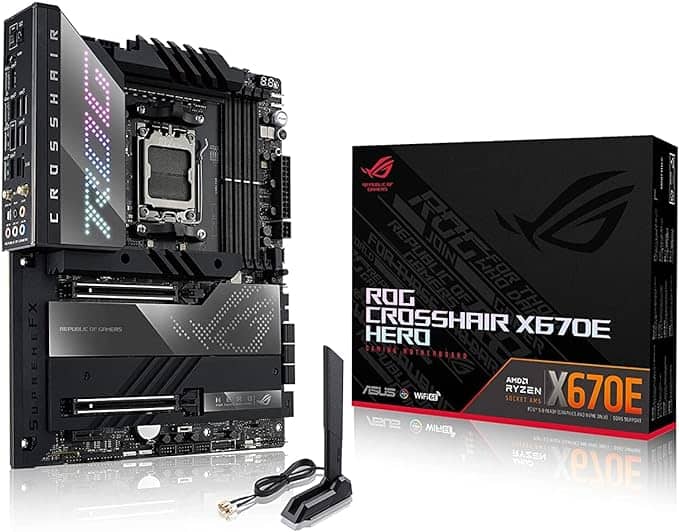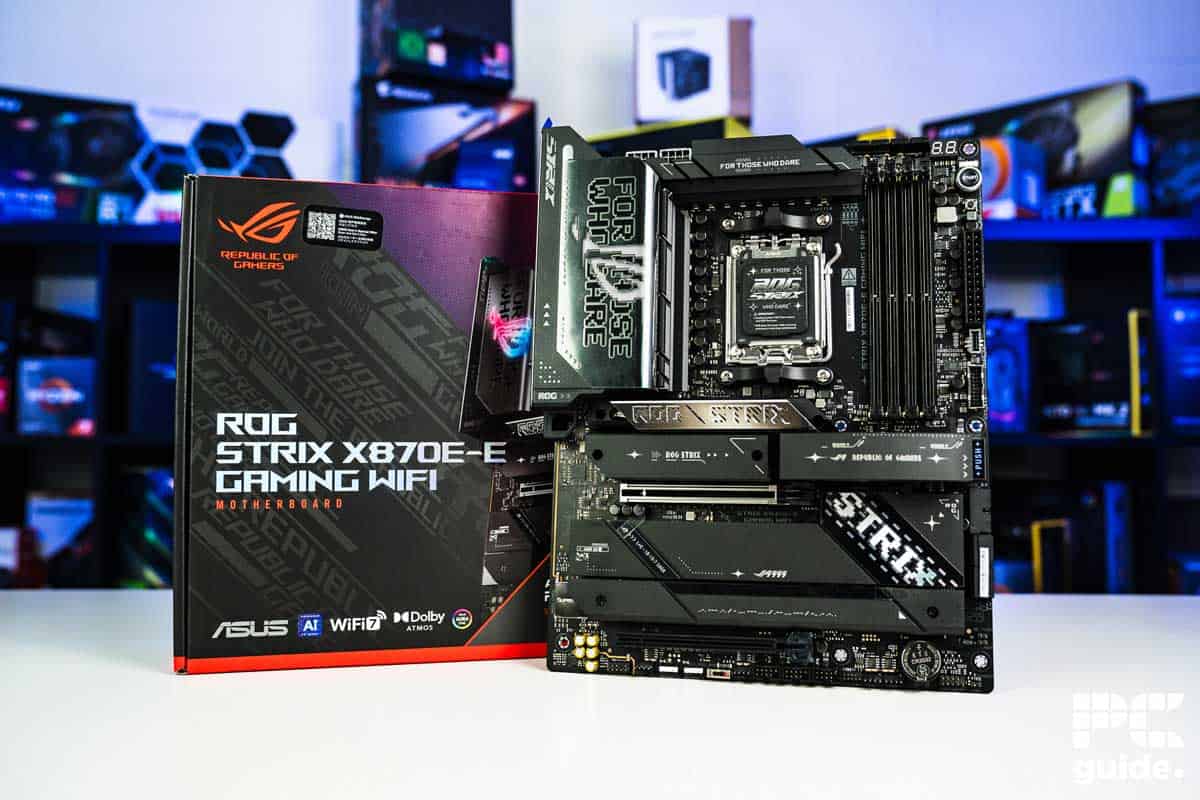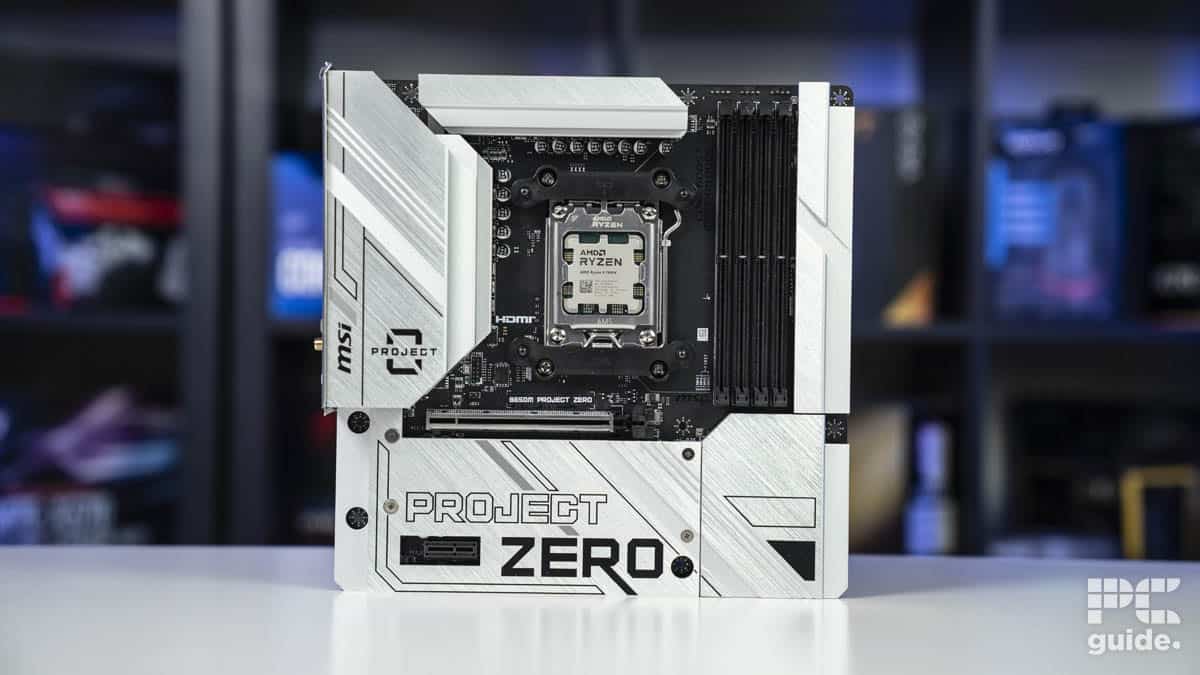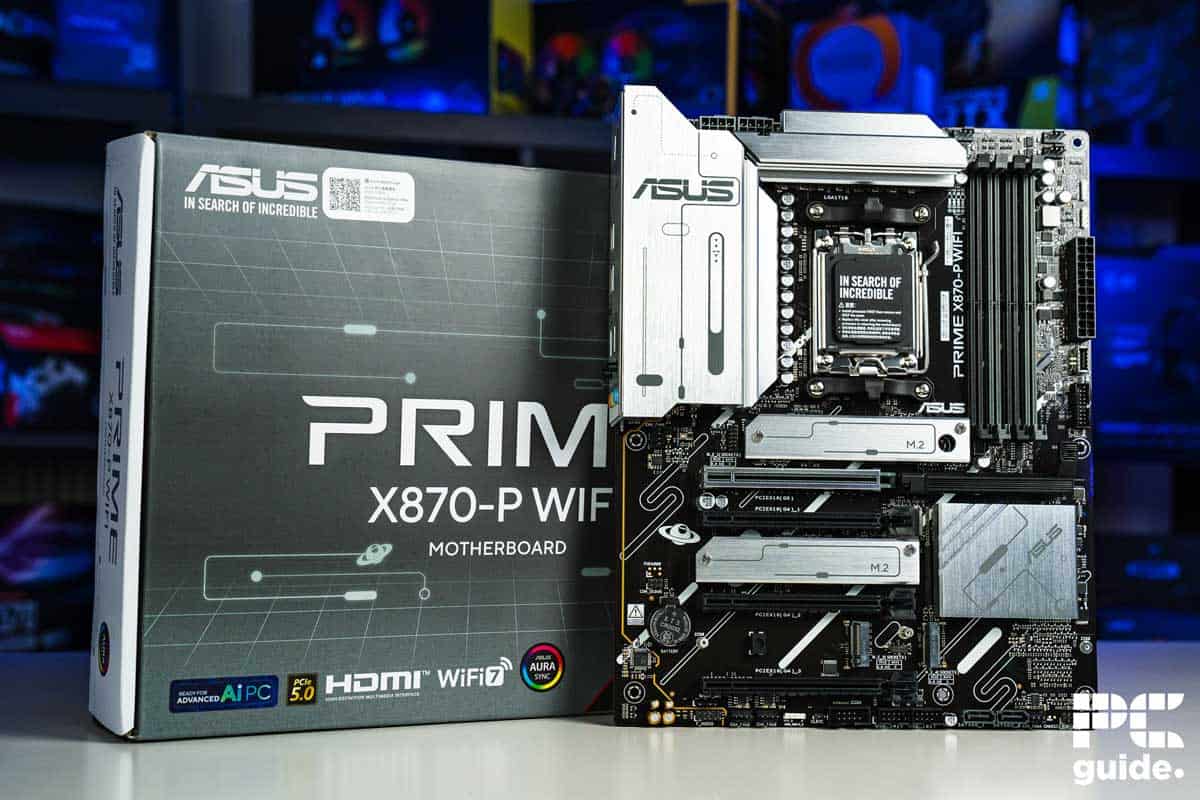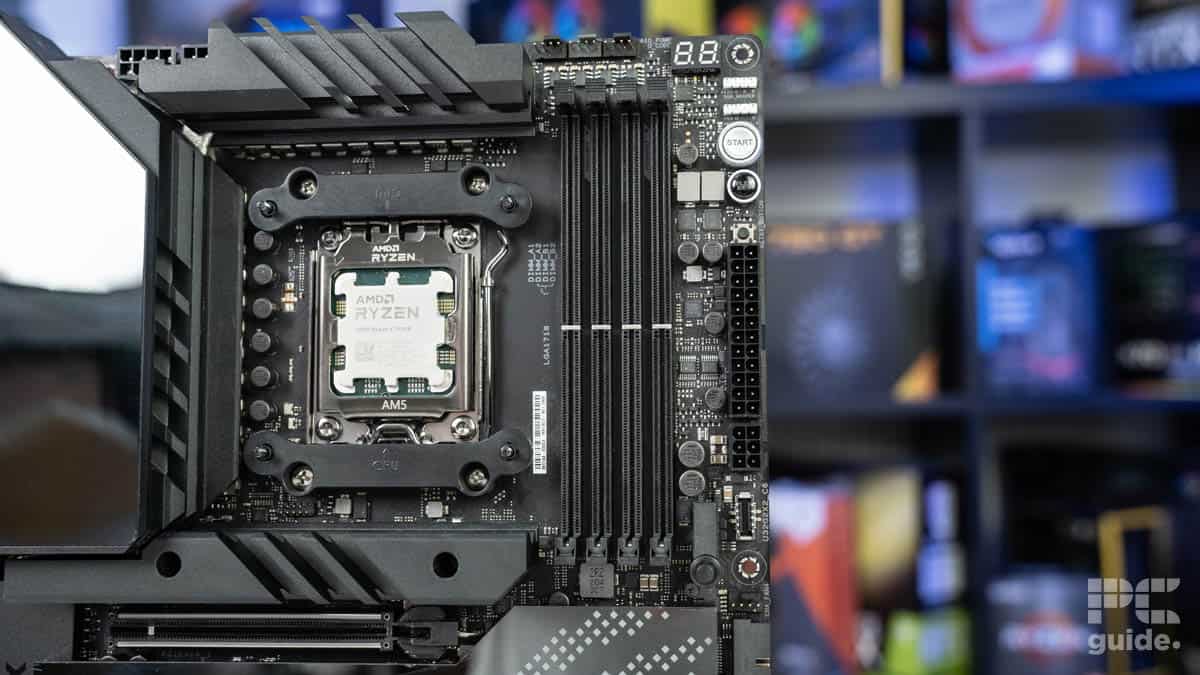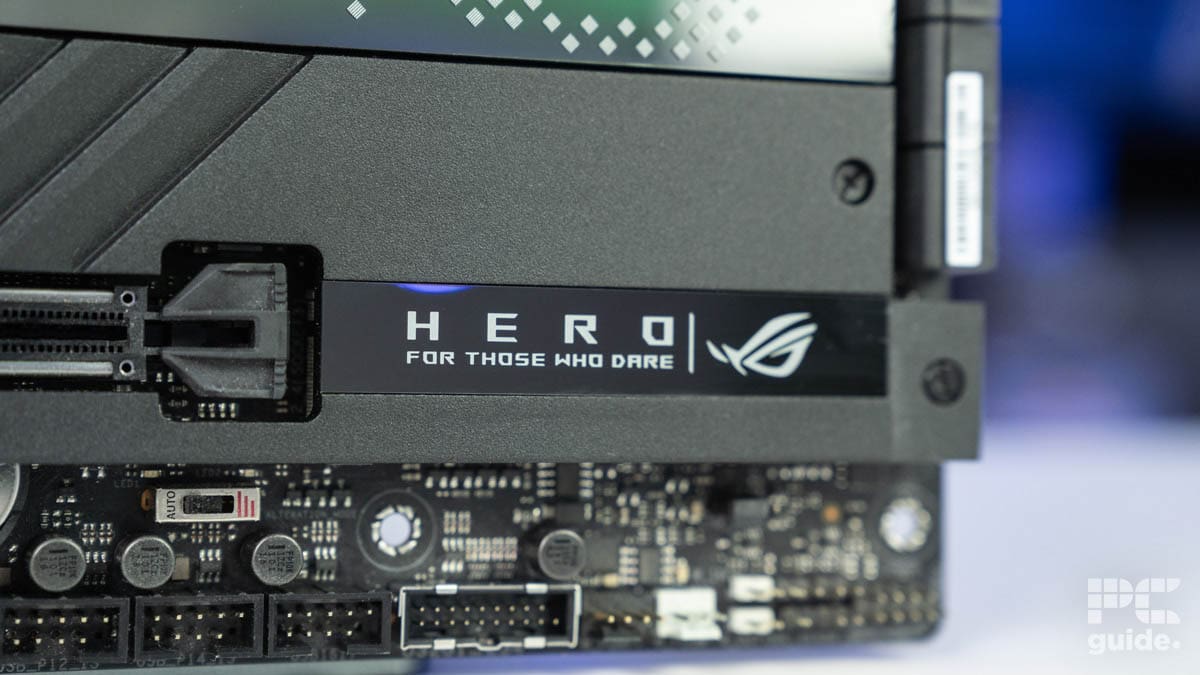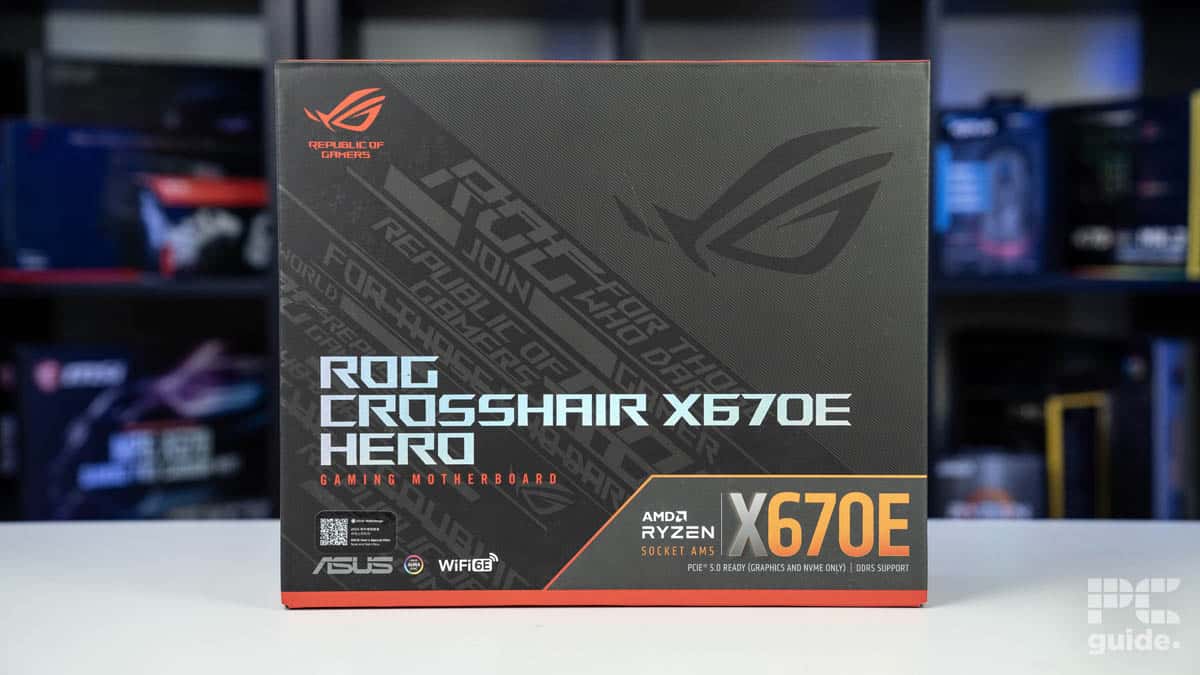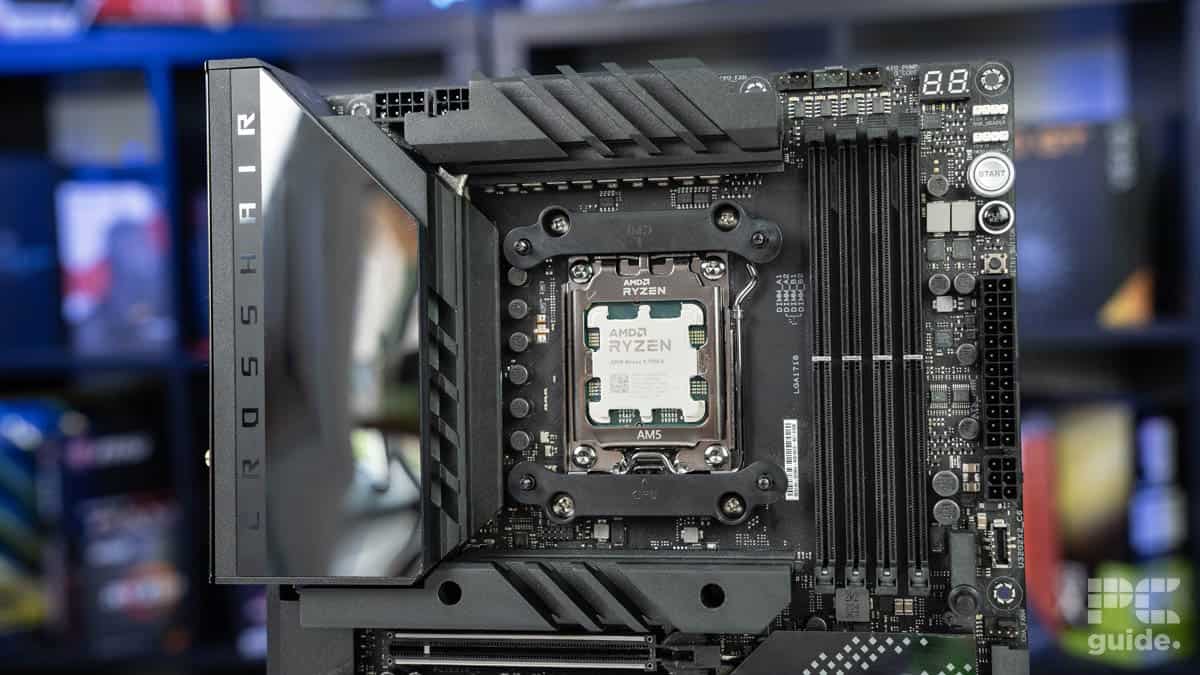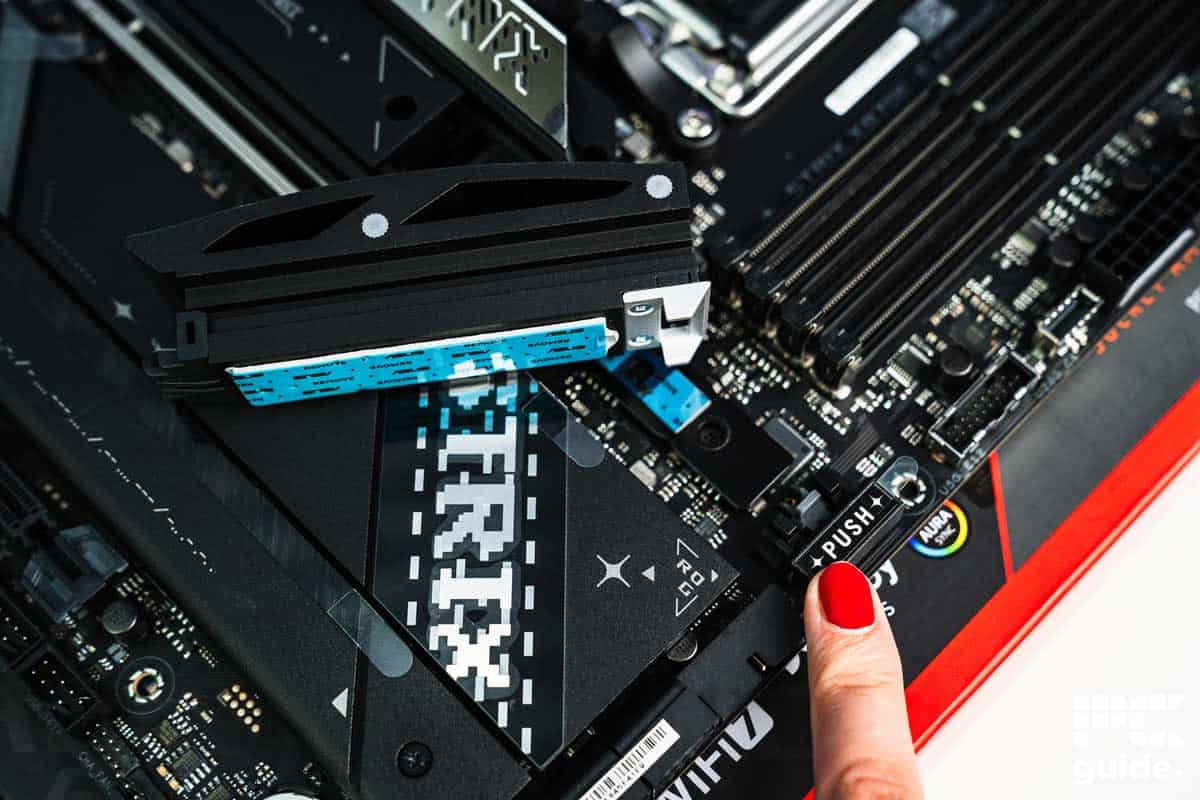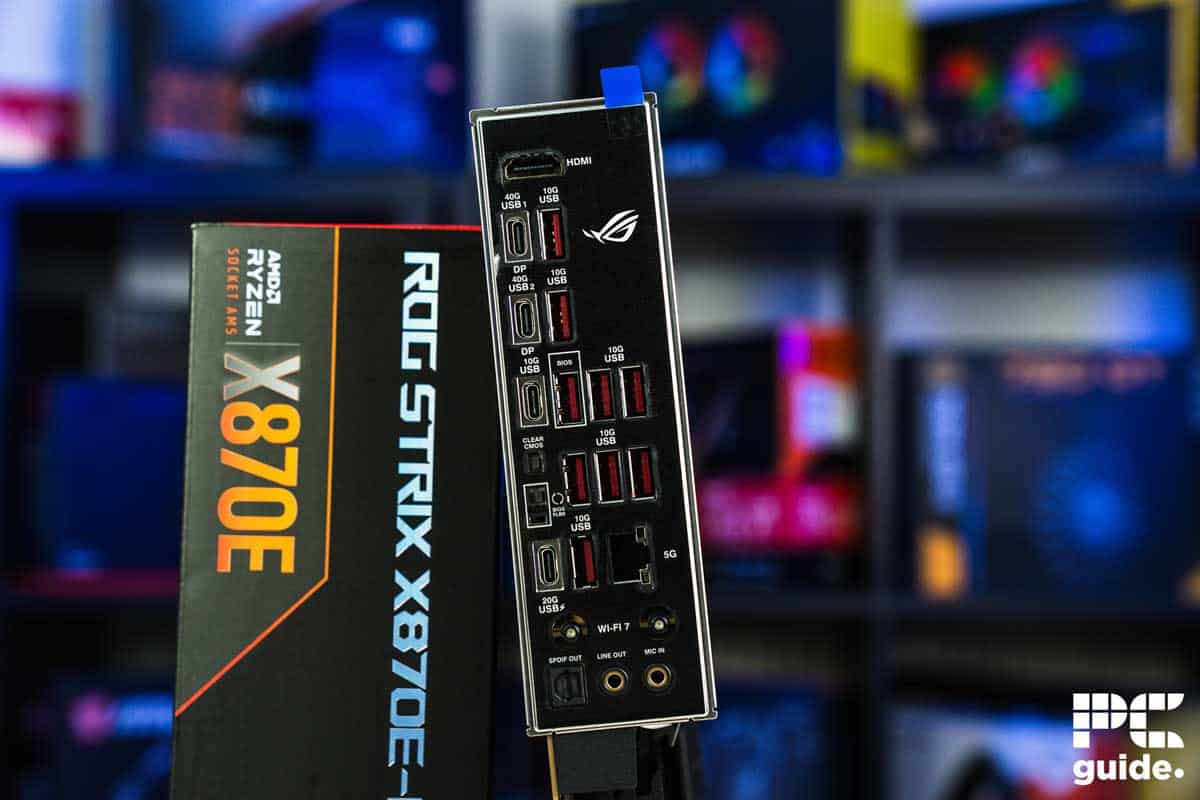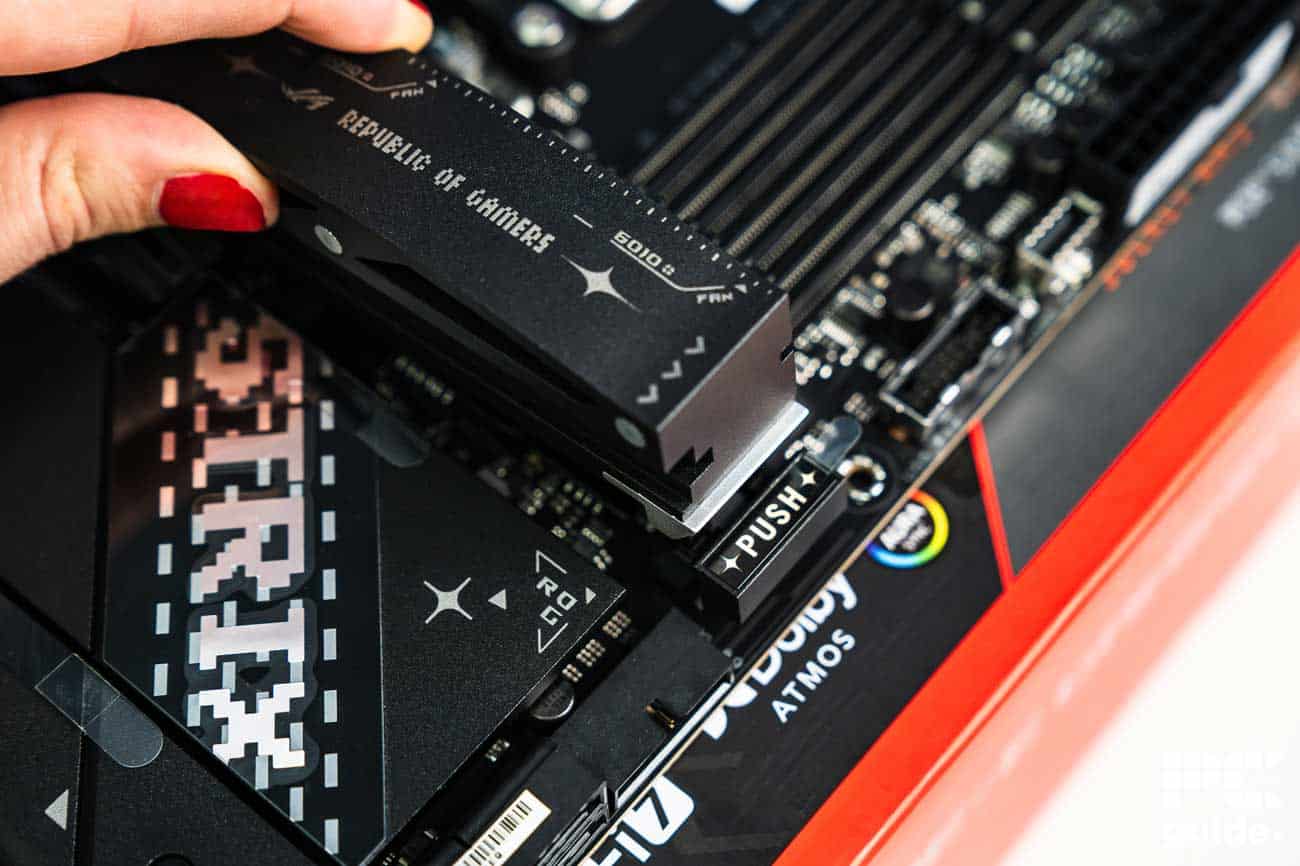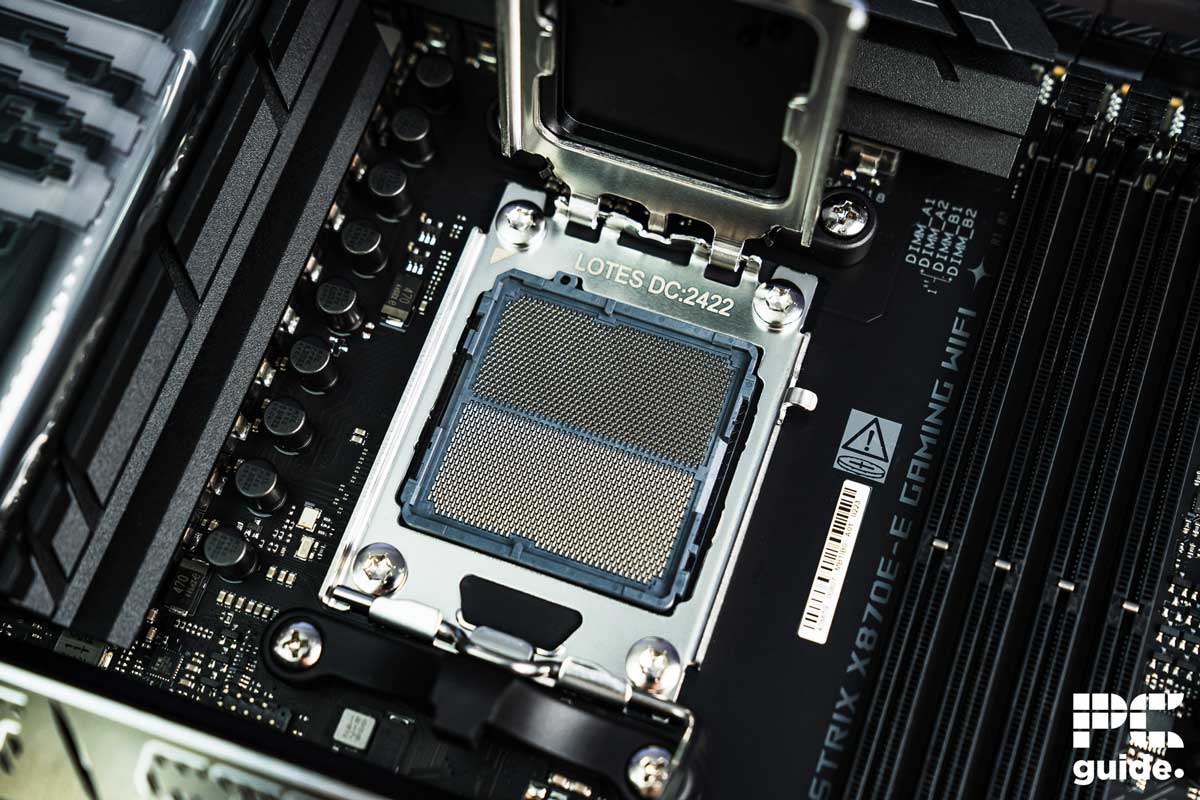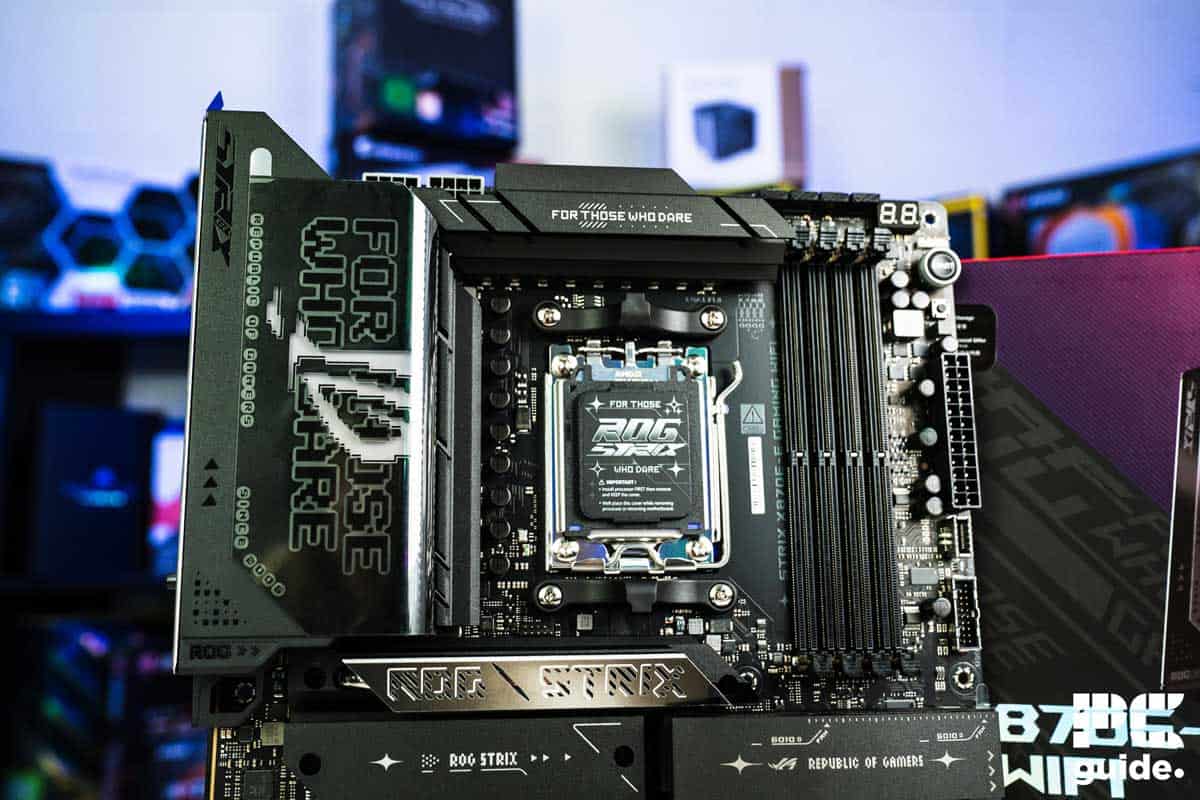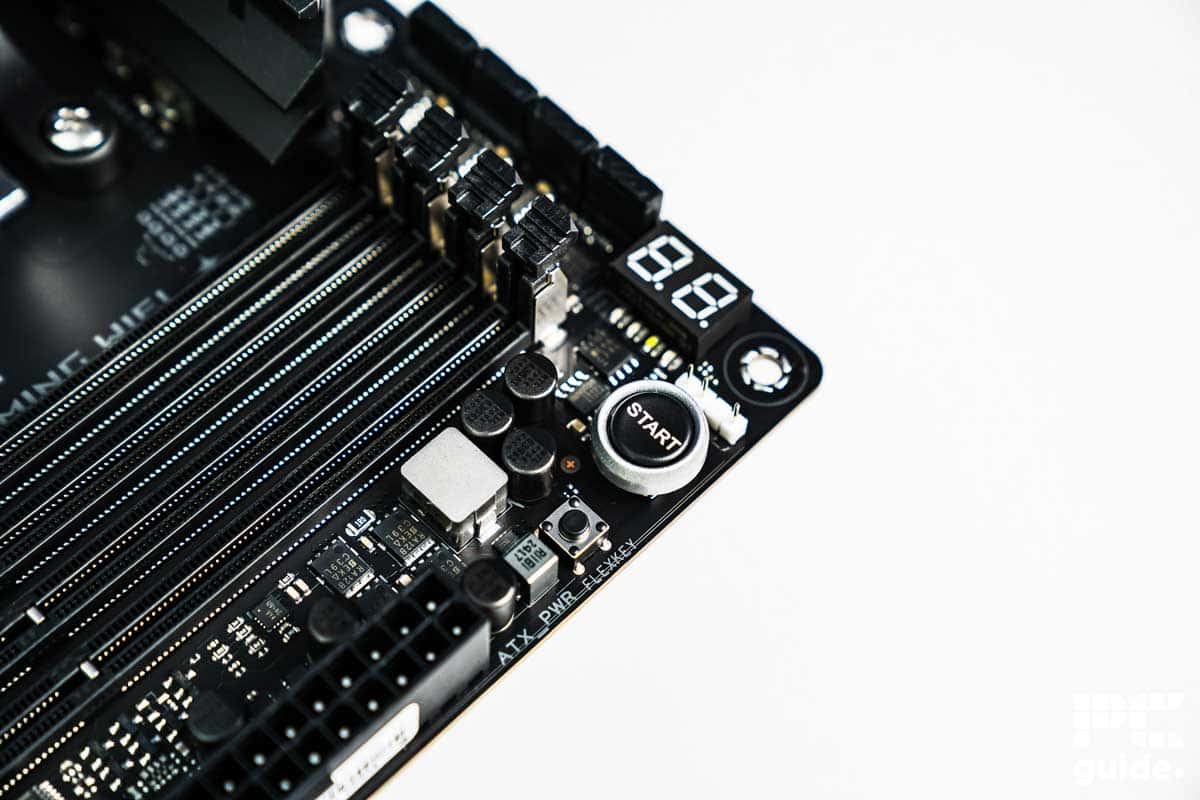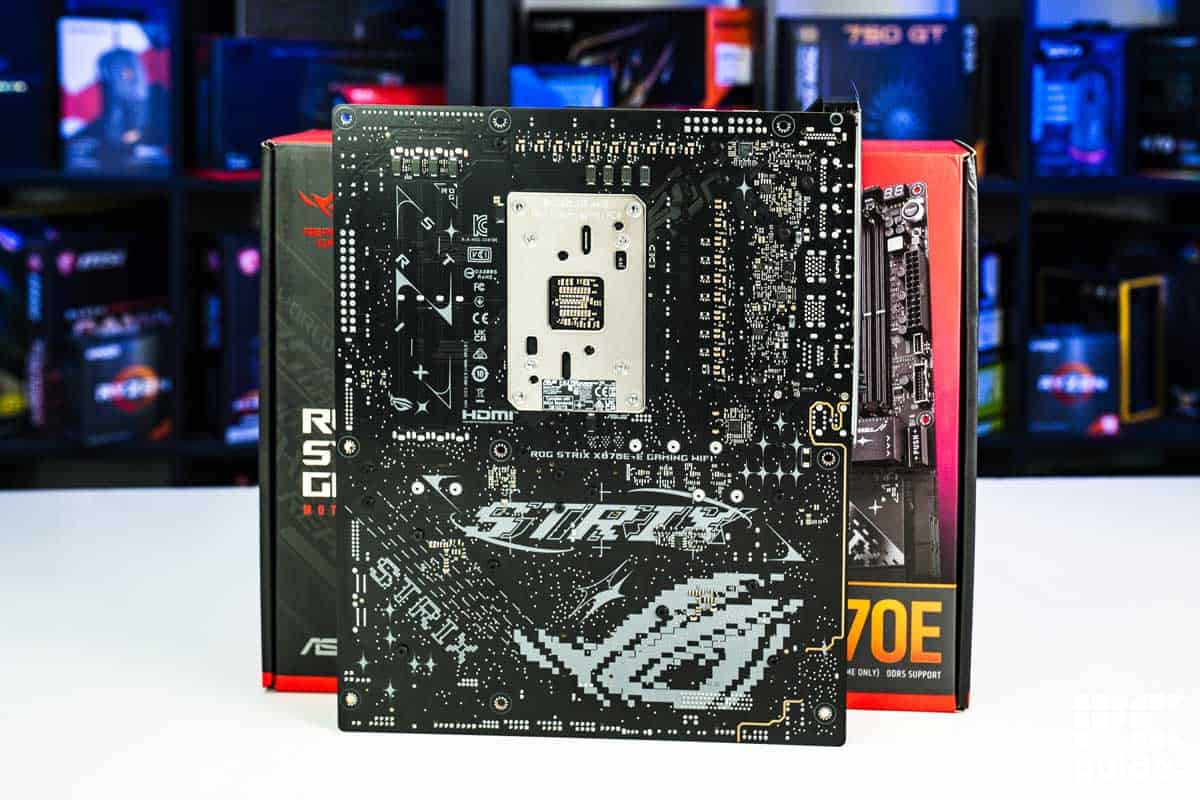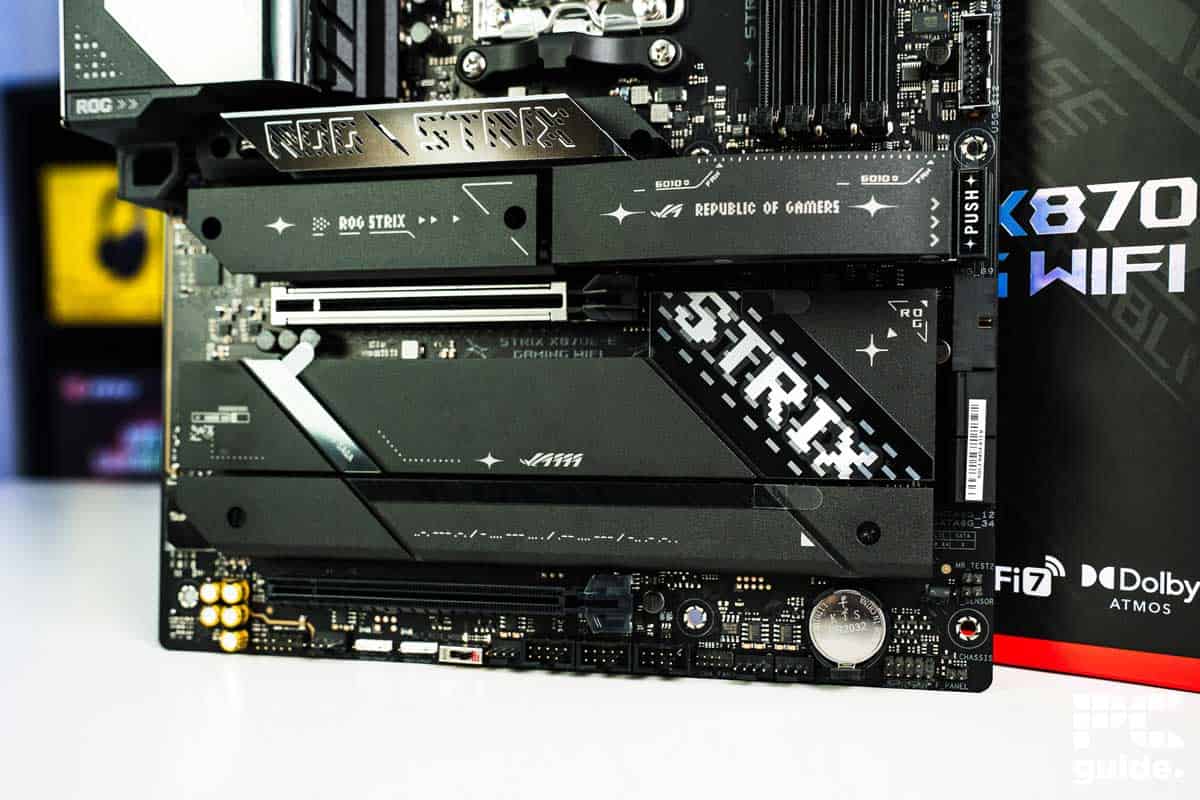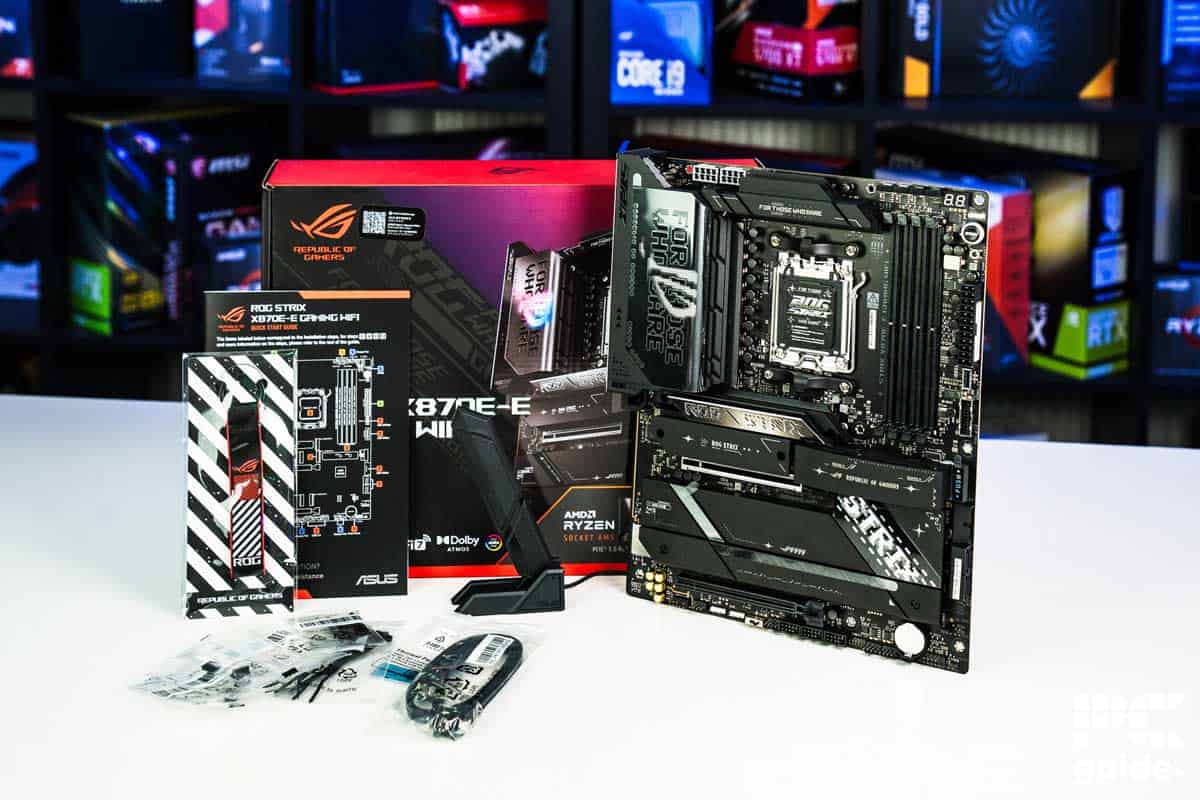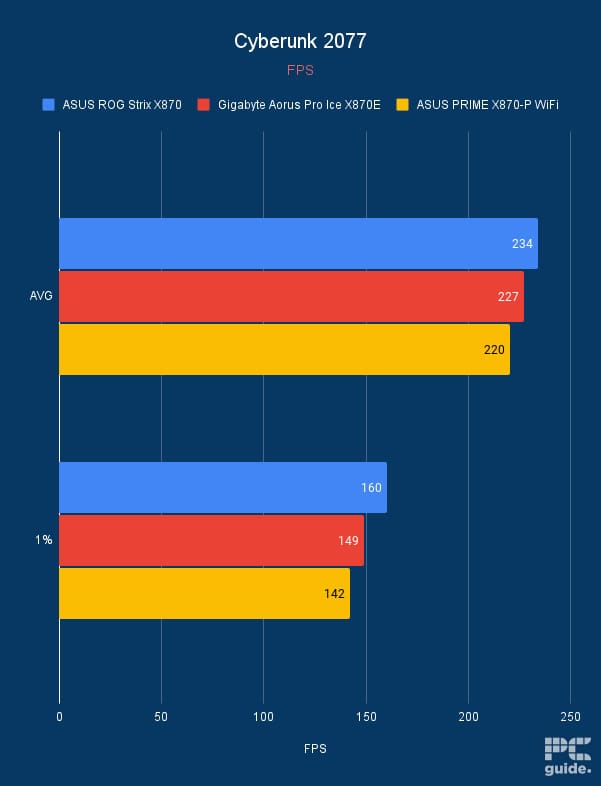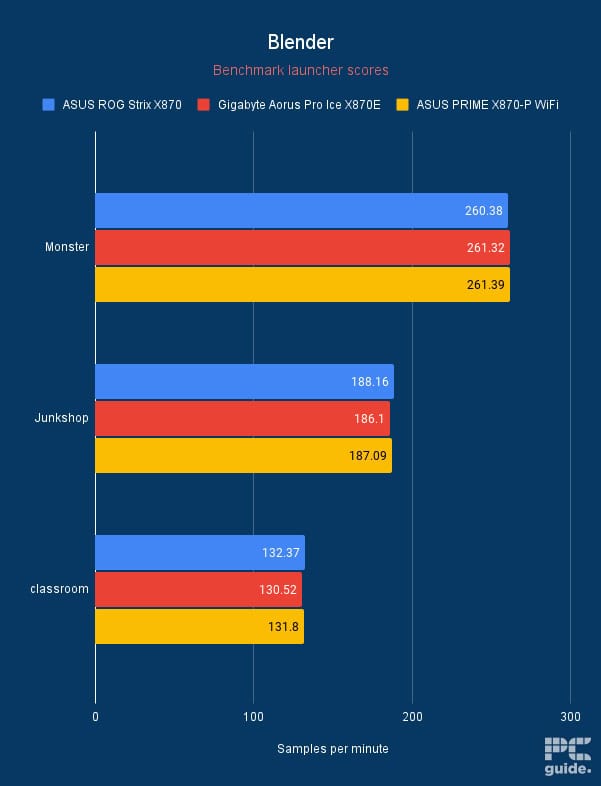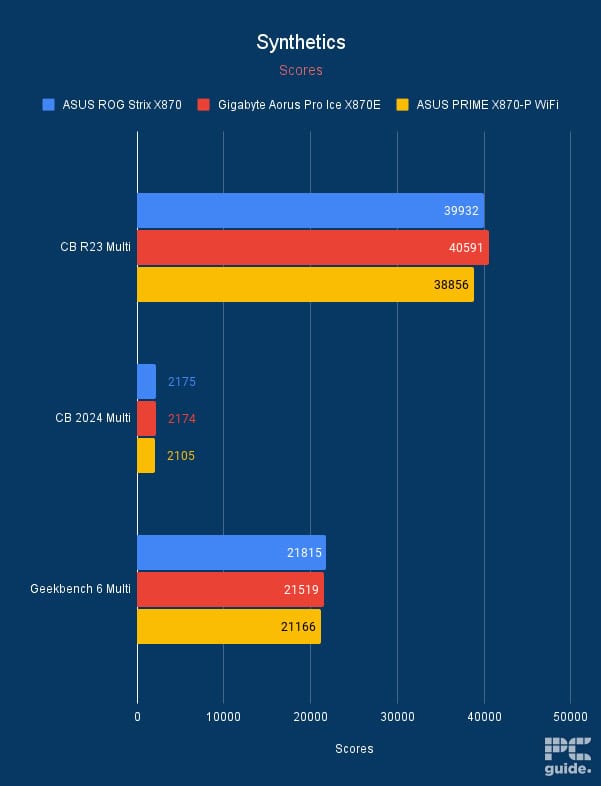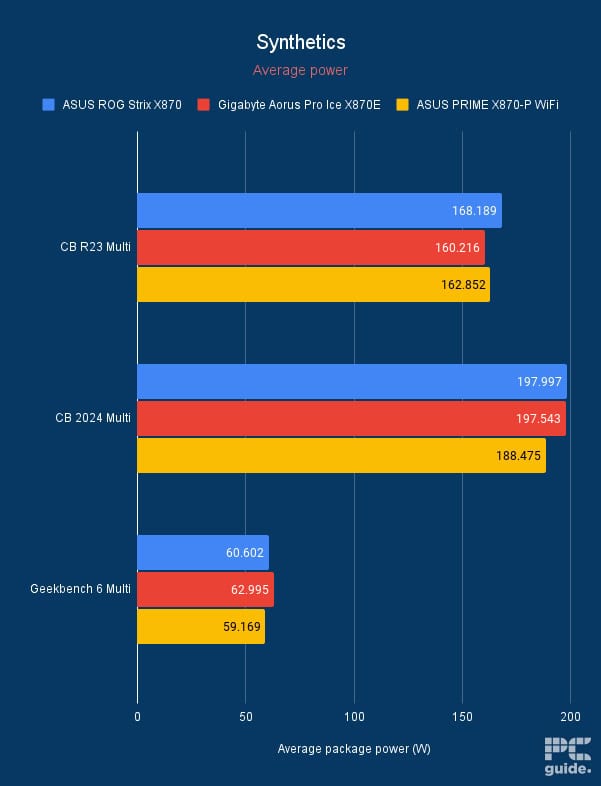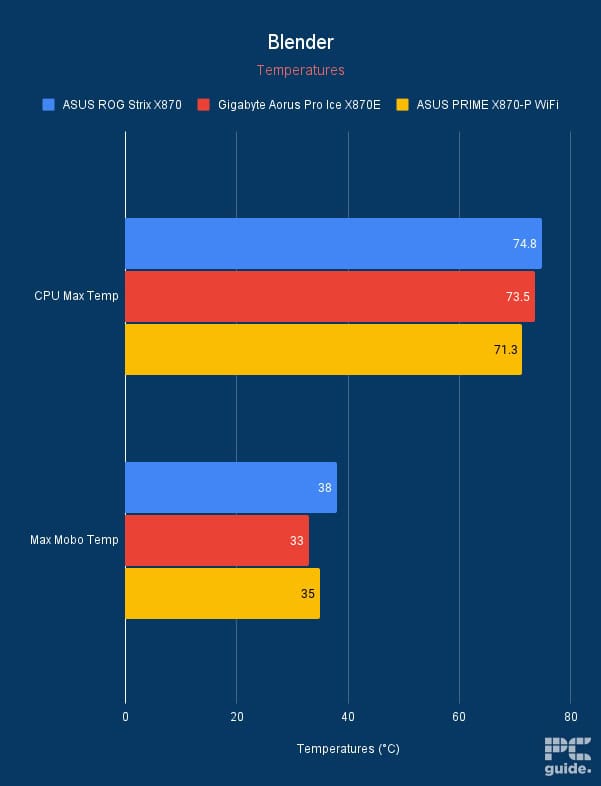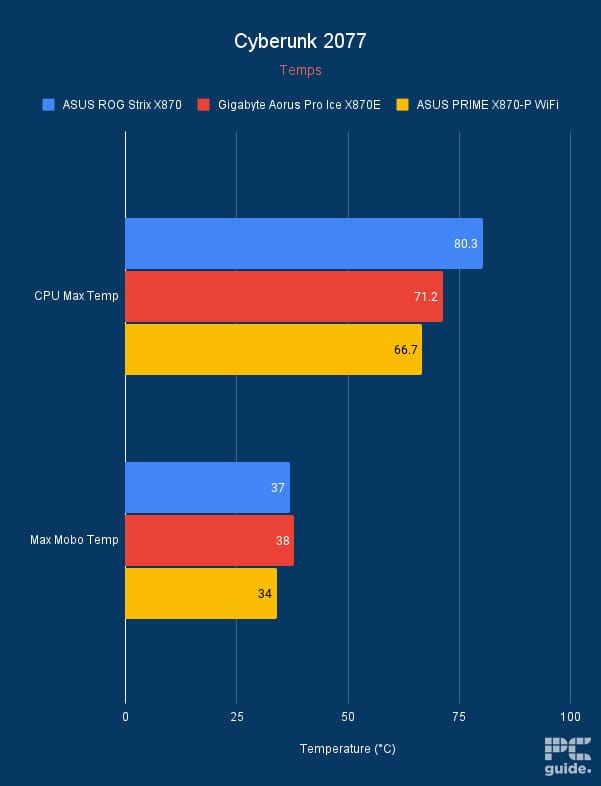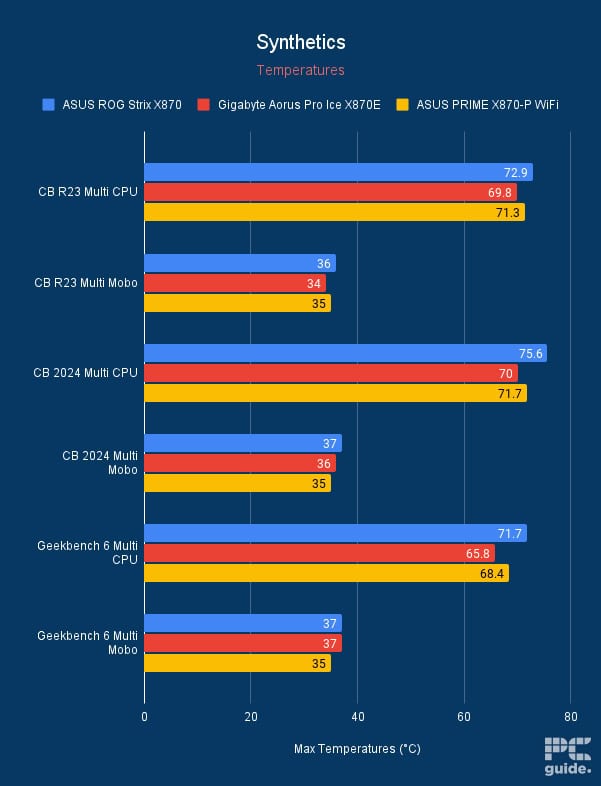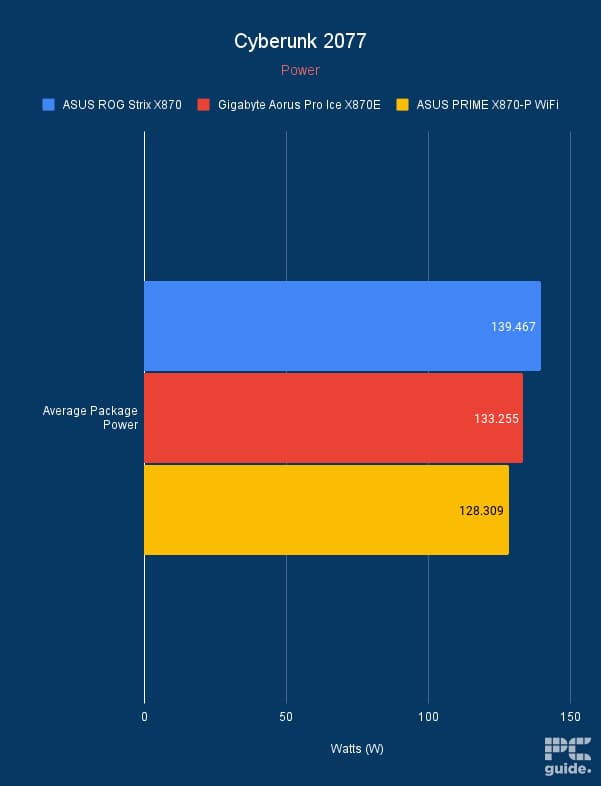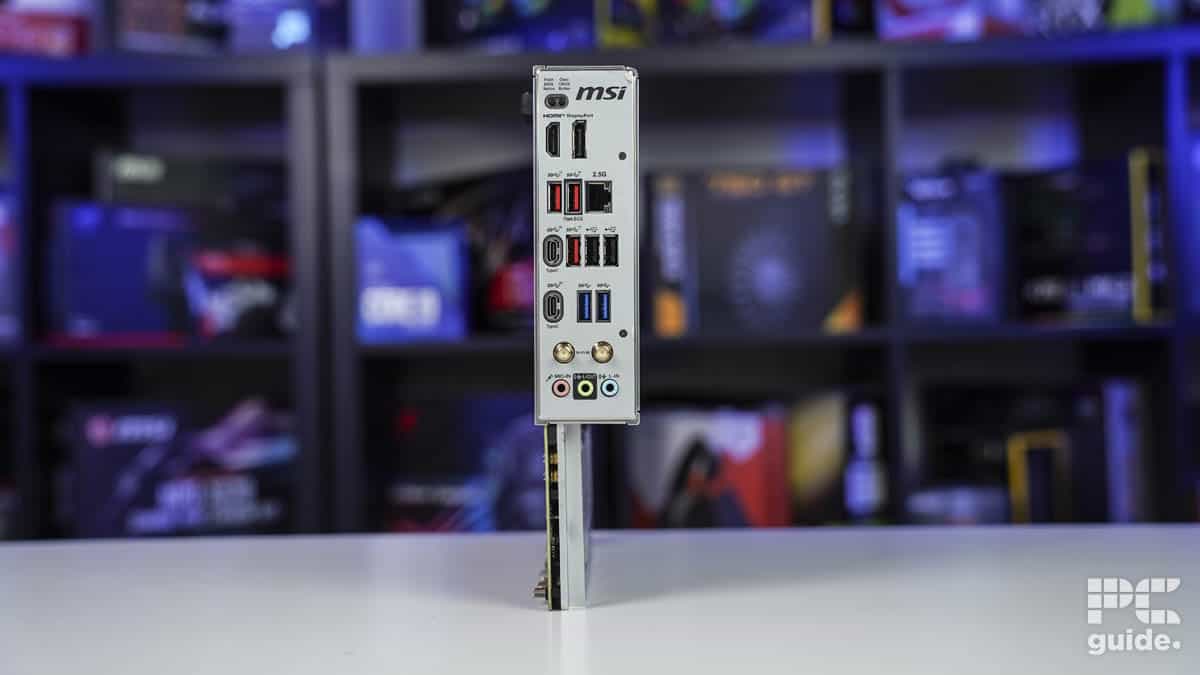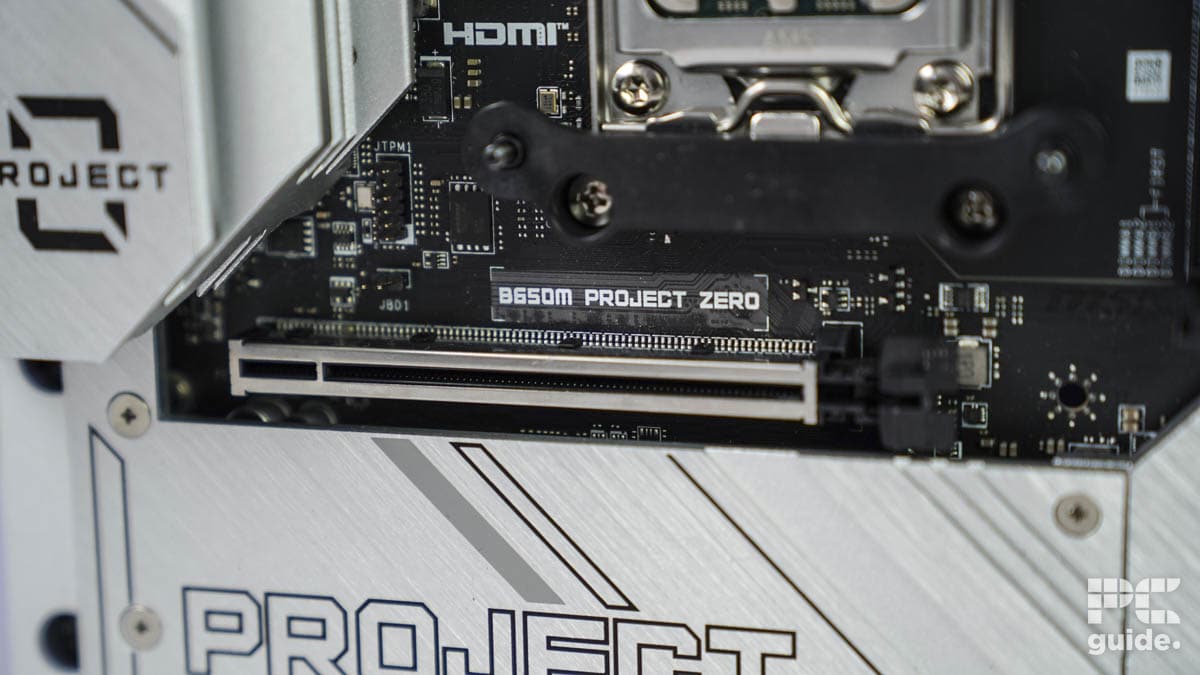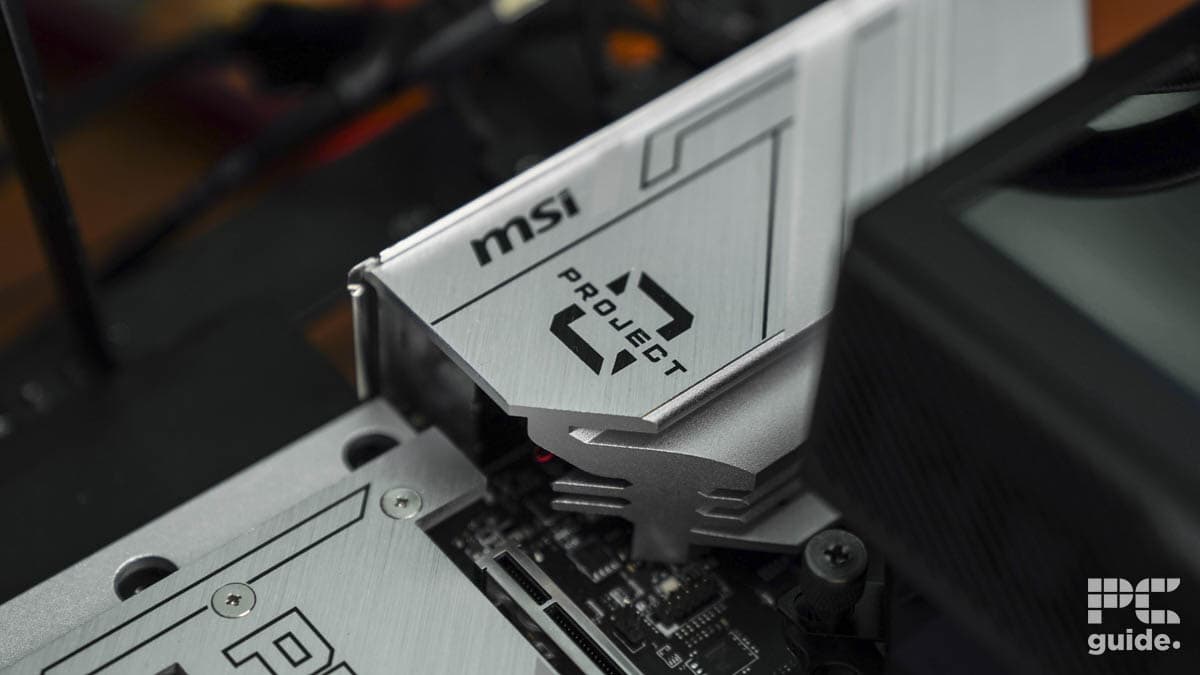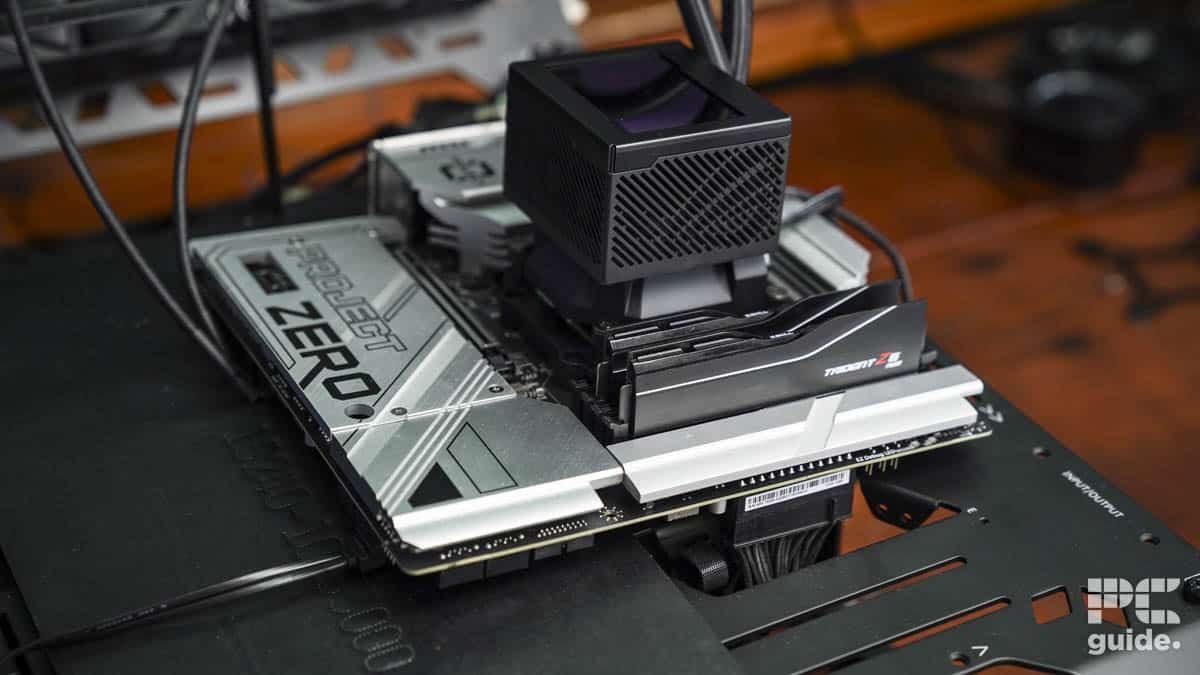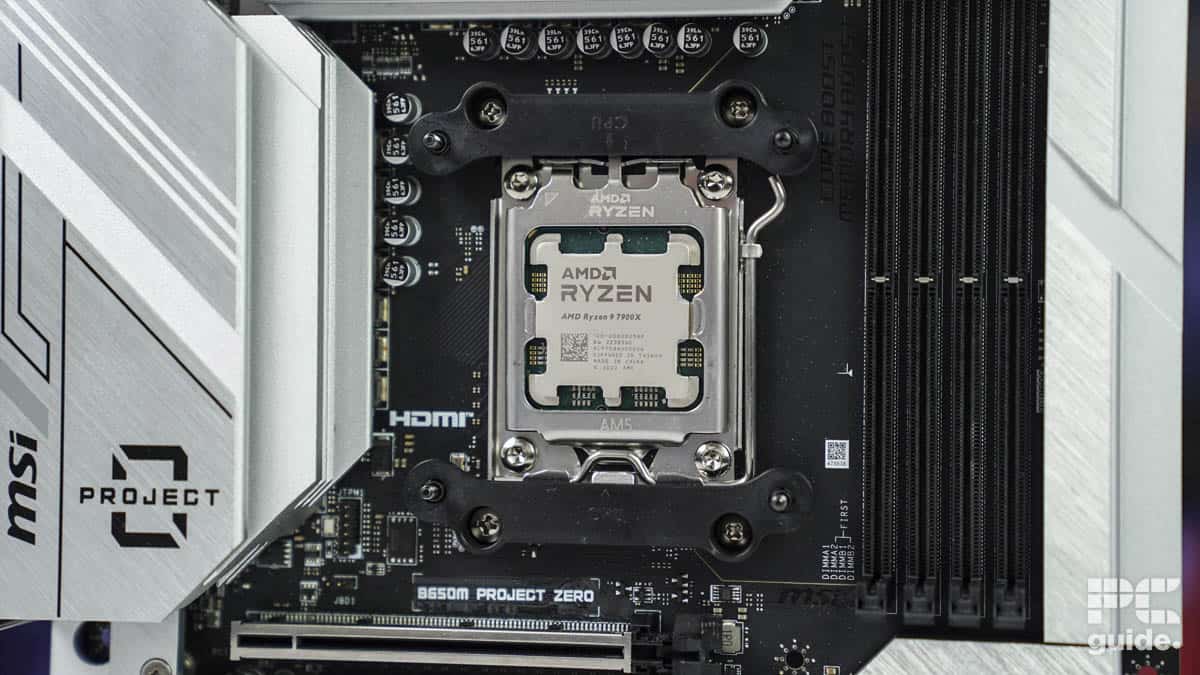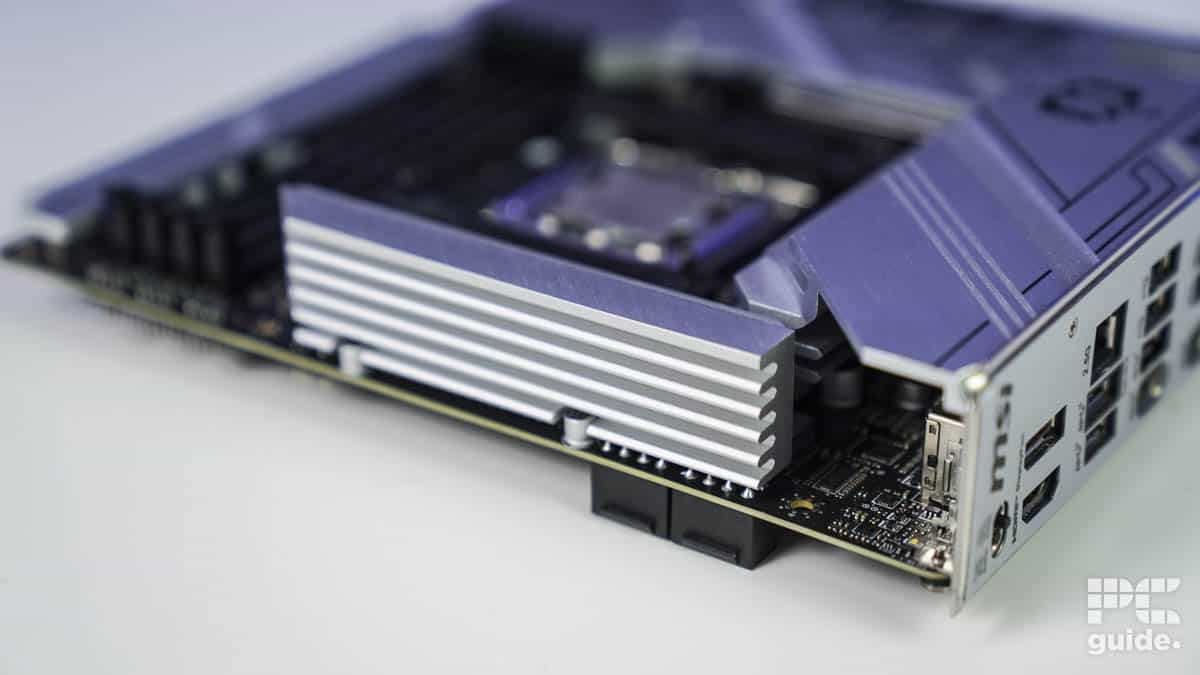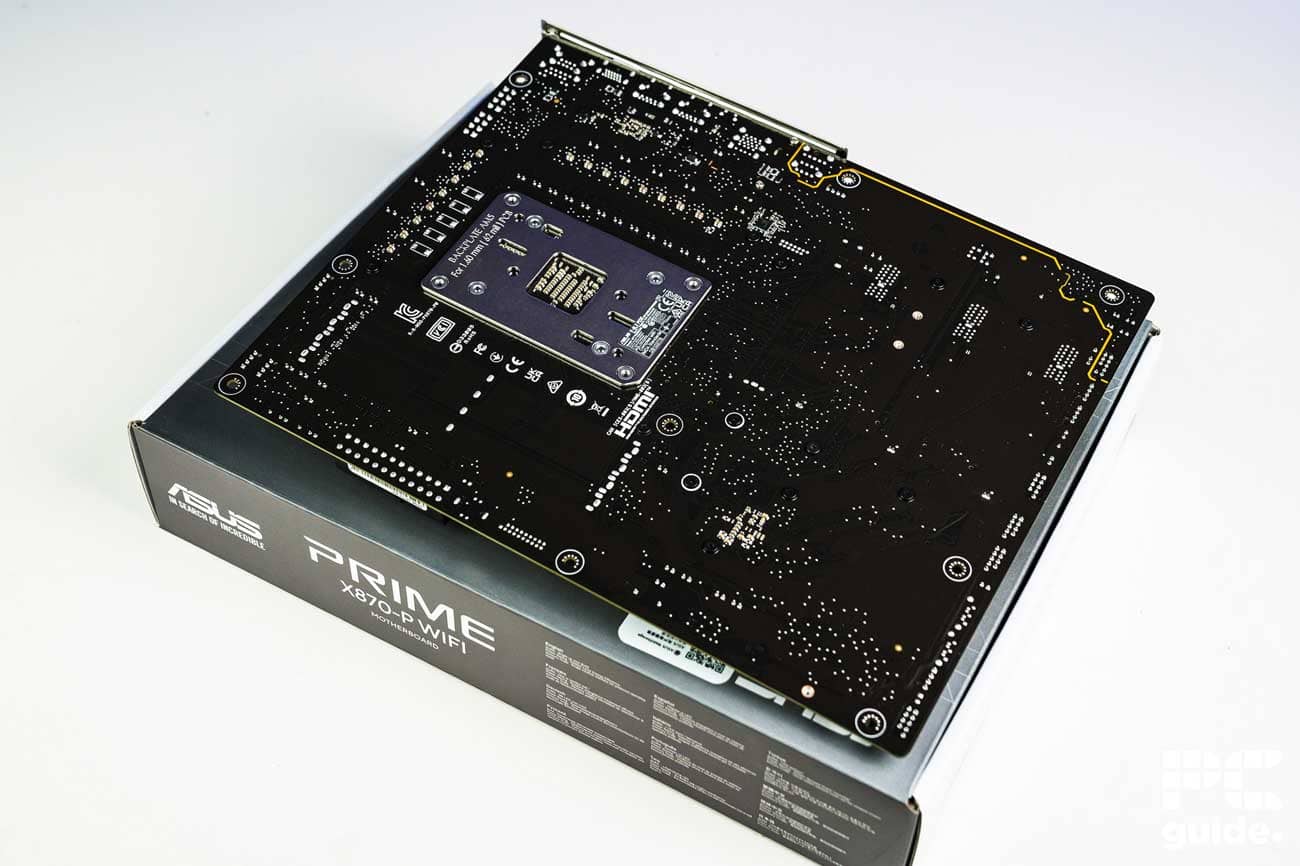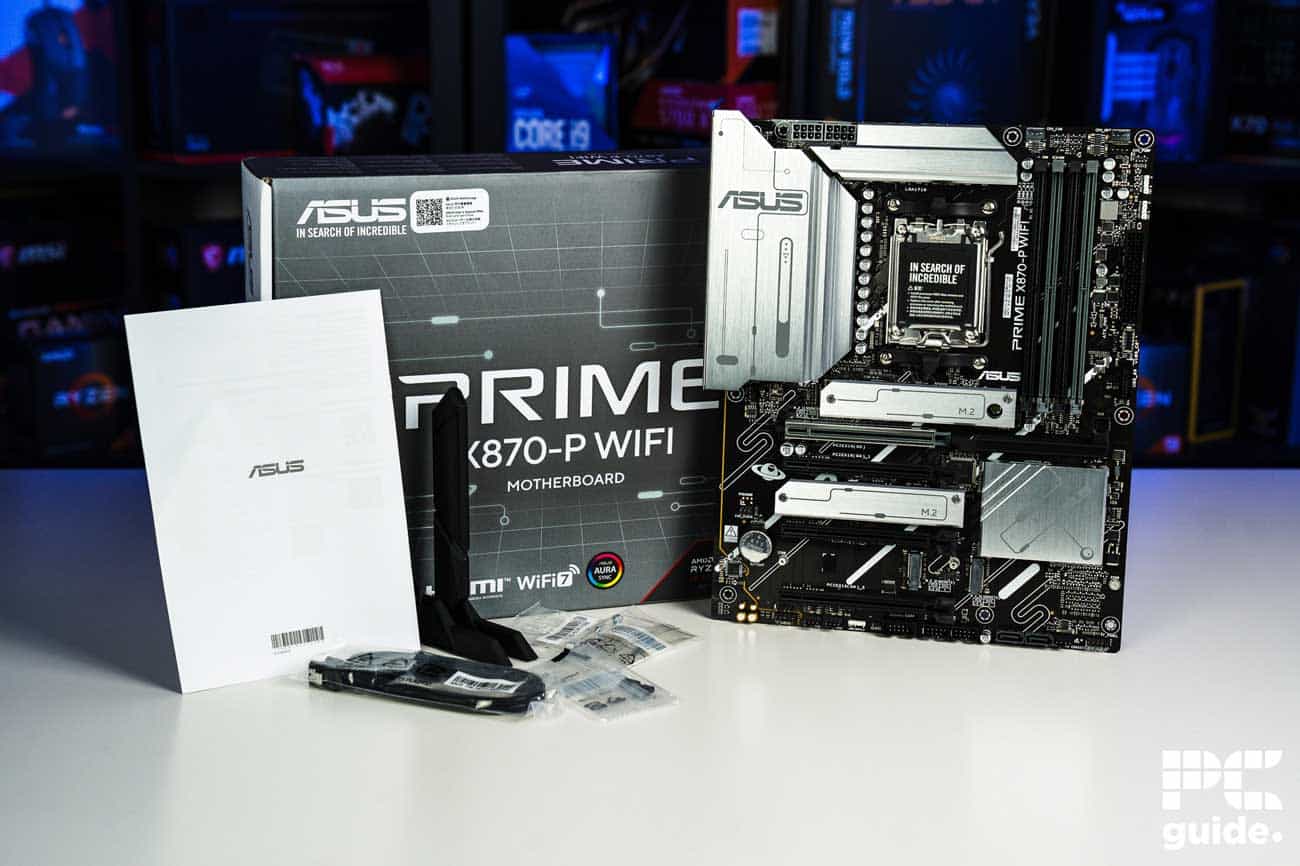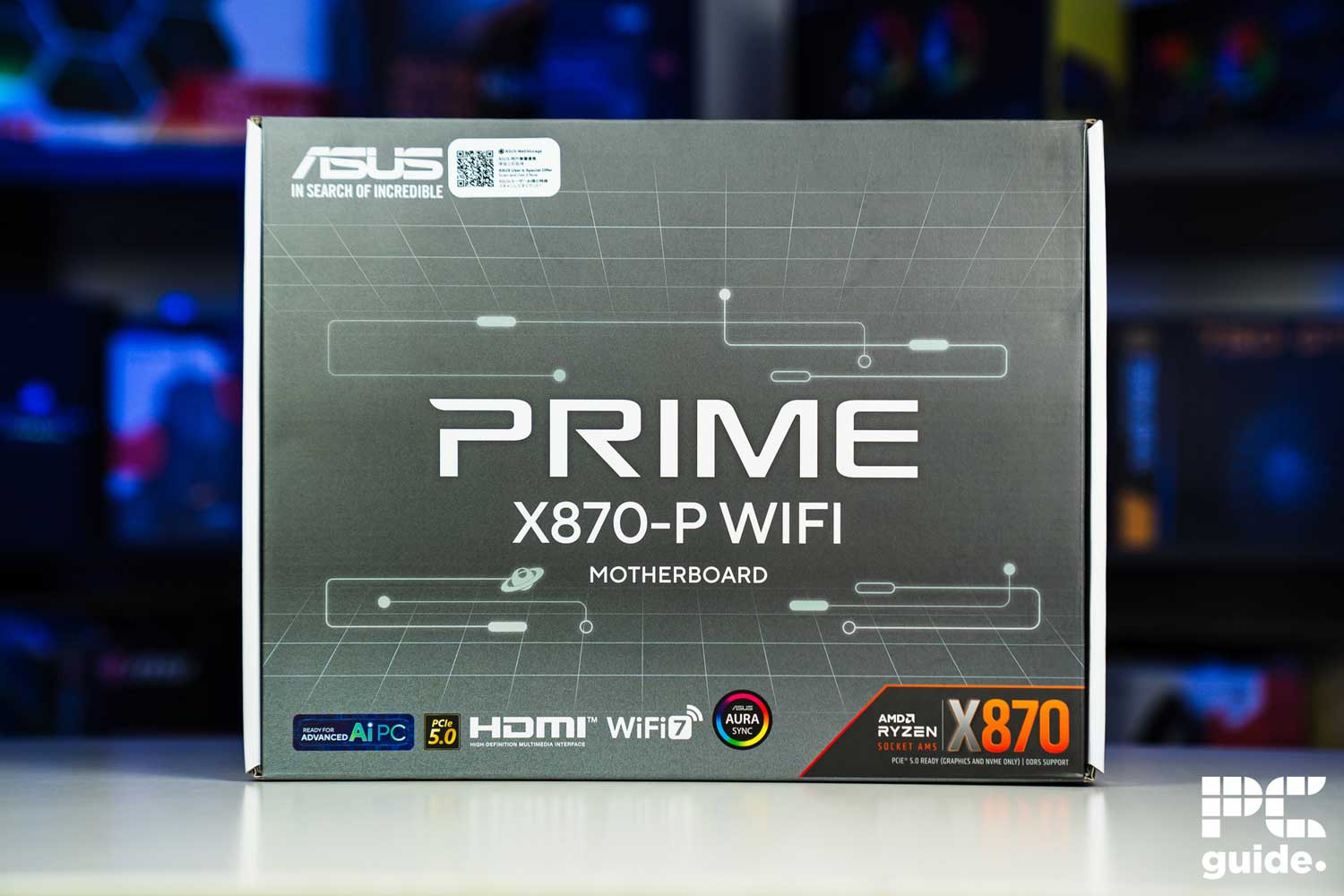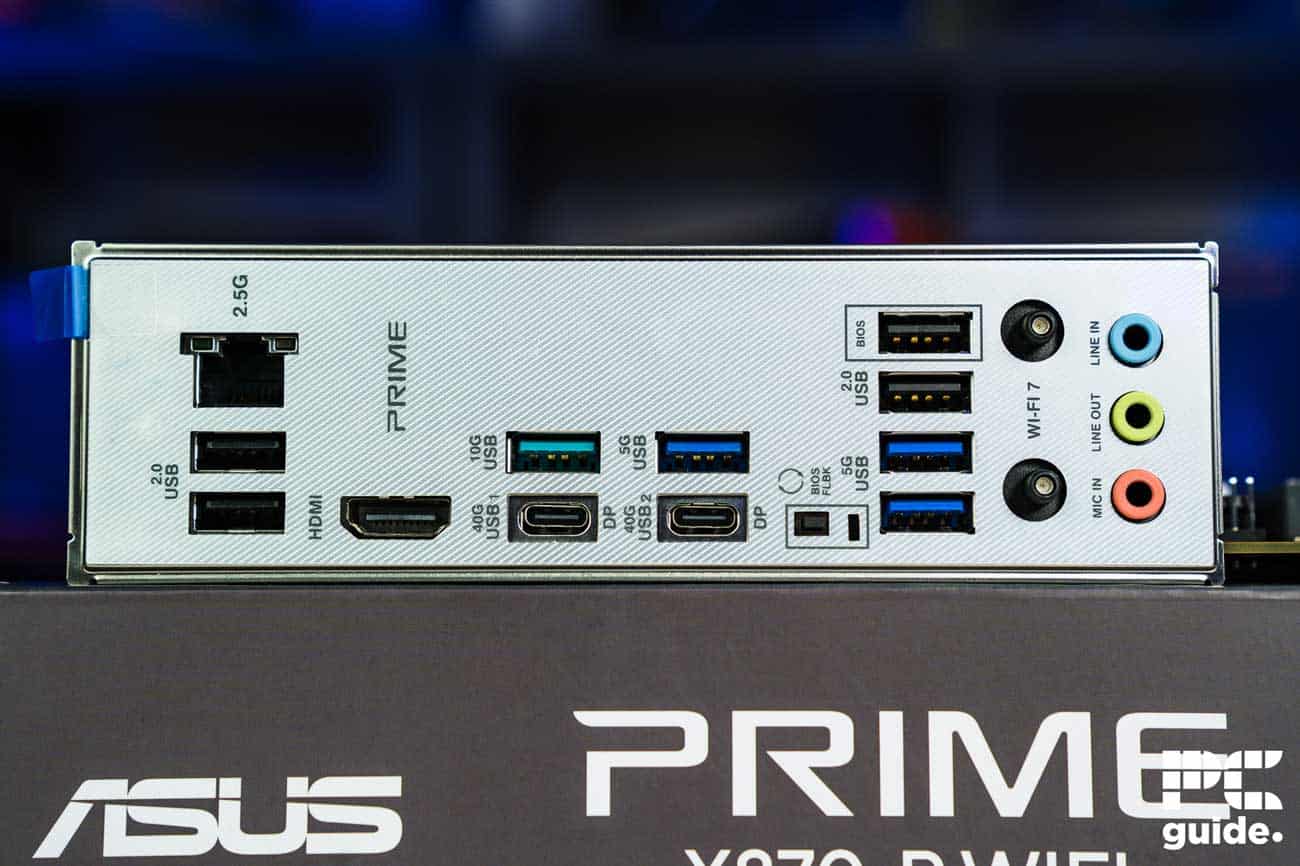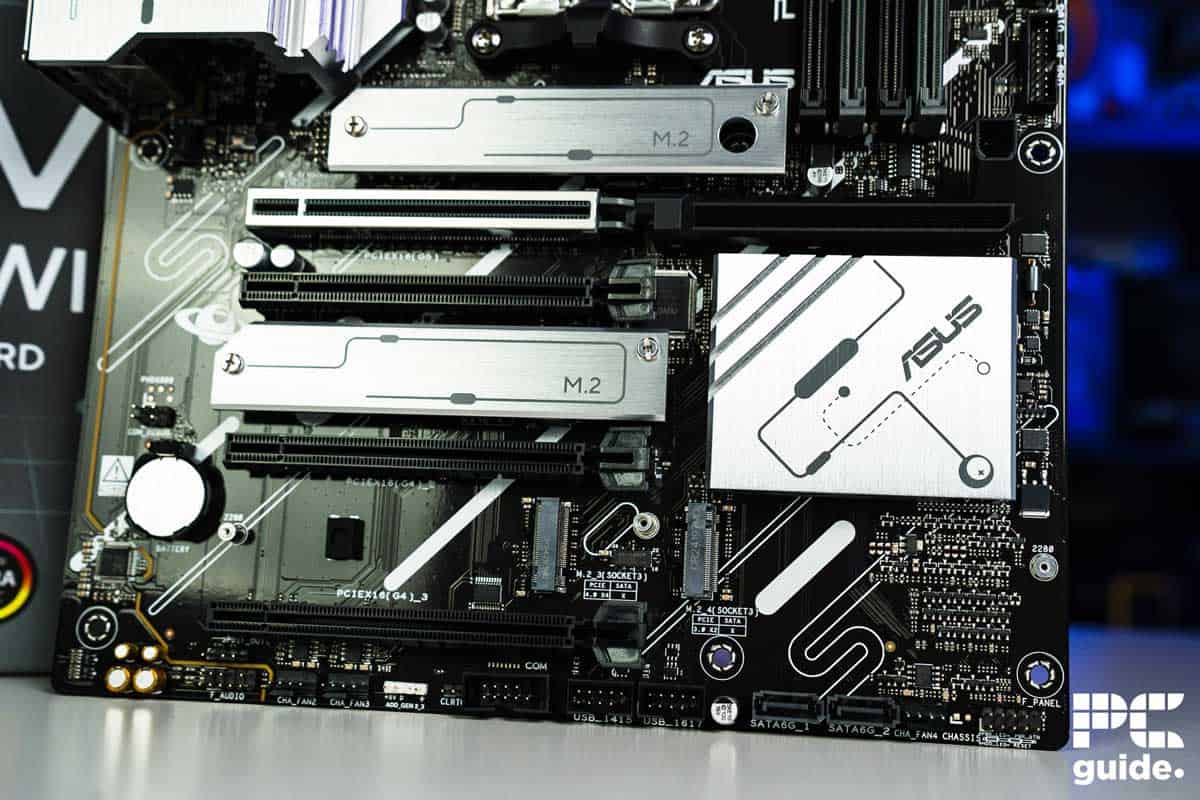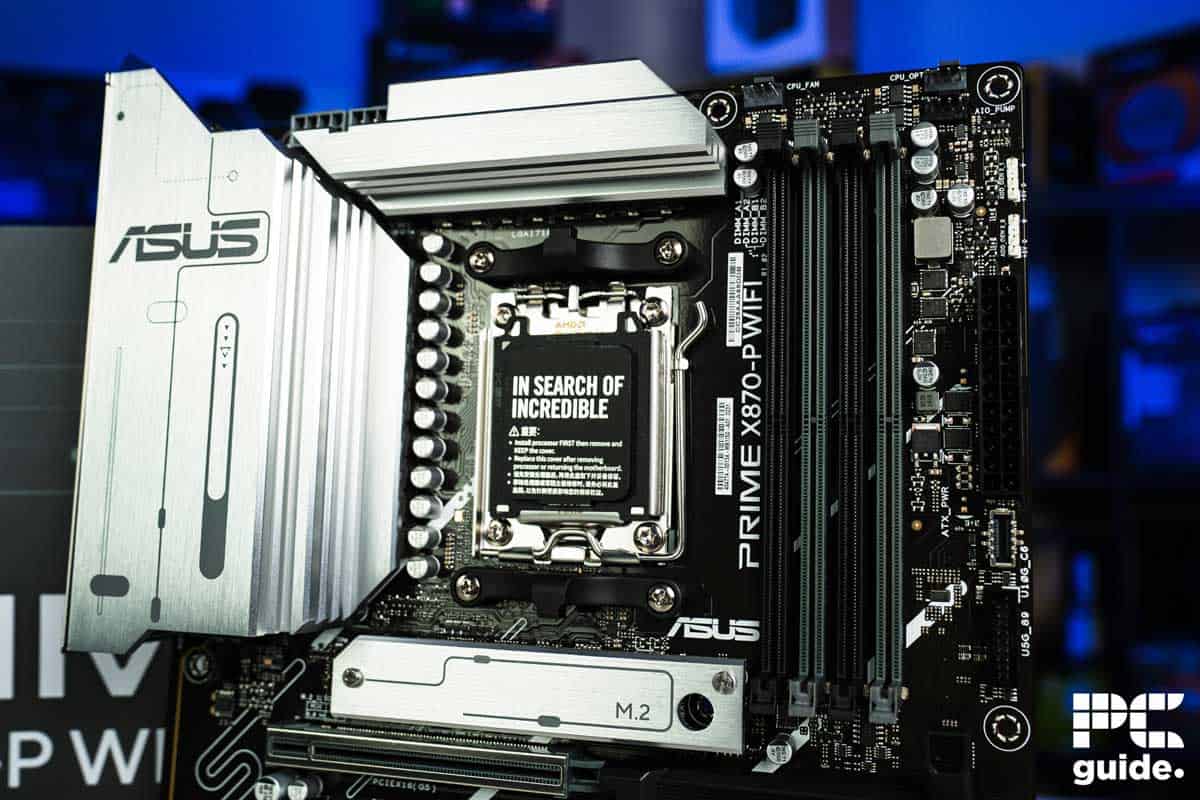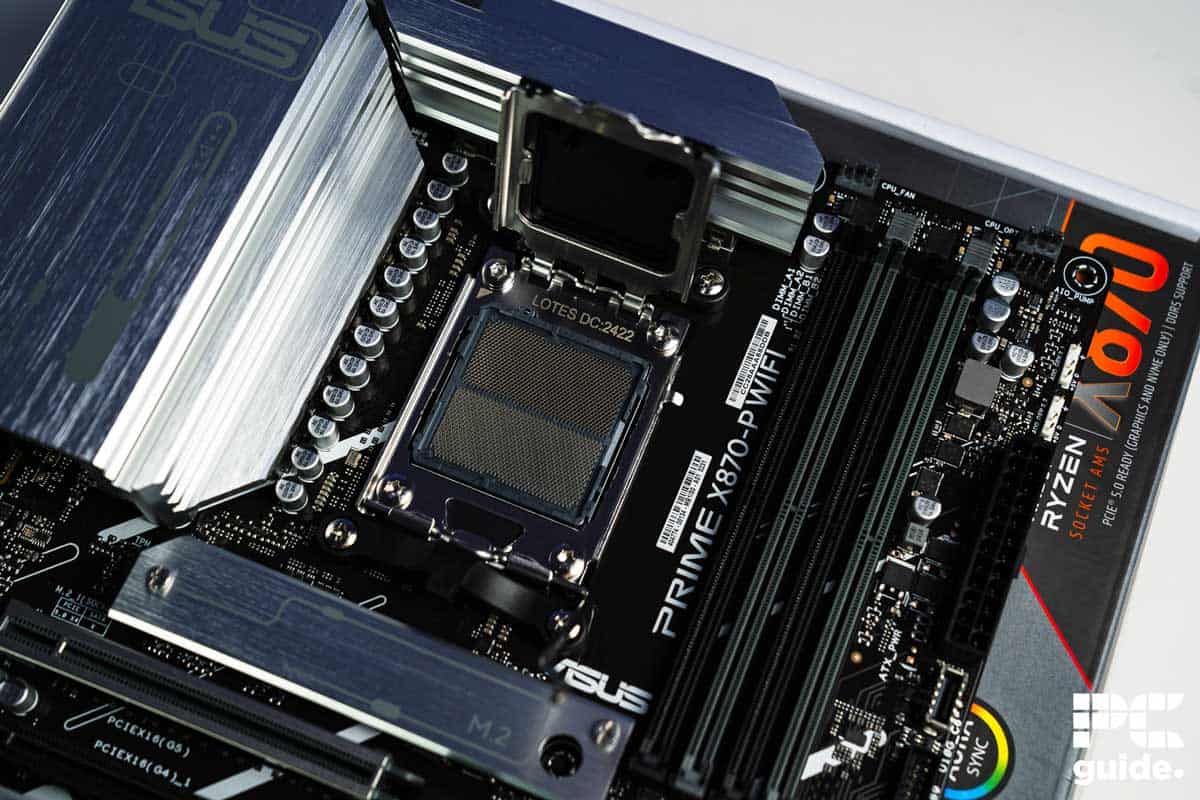Best motherboard for Ryzen 7 7800X3D in 2025 – our top picks tested
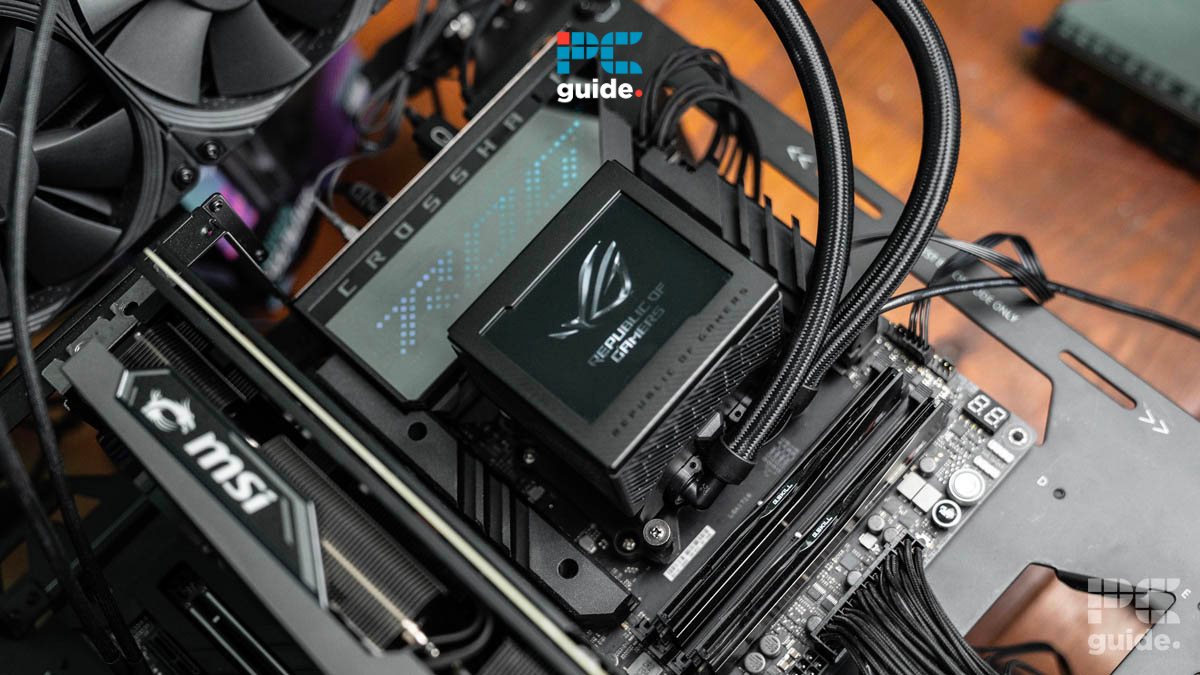
Table of Contents
The advent of AMD’s Ryzen 7 7800X3D has undeniably heralded a new era in processing power. Built with cutting-edge 3D V-Cache technology, this processor stands tall as one of the best gaming CPUs on the market. To match that prowess, you want to pair it with a platform to match, so a best motherboard for the 7800X3D is a wonder to find.
With the rave 7800X3D reviews, many users are gravitating towards the AM5 platform, eager to exploit the incredible potential of the 7800X3D. To build a top gaming PC, you need some great hardware to ensure you get the best performance and compatibility available.
That’s why we’ve picked out some of the best motherboards out there for you to browse. Ranging from the top options for pure performance and features, down to the budget options that can provide a value option.
-
Best motherboard for 7800X3D
ASUS ROG Crosshair X670E Hero
- Socket: AM5 (LGA 1718)
- Chipset: X670E
- Form Factor : ATX
- PCIe Version : PCIe Gen 5 Storage – PCIe Gen 5 GPU
- Memory speed : 6400MHz + OC
- Memory capacity : 128GB (4 x 32GB)

-
Best high-end motherboard for 7800X3D
ASUS ROG Strix X870E-E Gaming WiFi
- Socket: AM5 (LGA 1718)
- Chipset: X870E
- Form Factor: ATX
- PCIe Version: Gen 5 NVMe & Gen 5 GPU
- Memory Speed: 8000+MT/s (OC)
- Memory Capacity: 192GB DDR5
-
Best mid-range motherboard for 7800X3D
MSI B650M PROJECT ZERO
- Socket: AM5 (LGA1718)
- Chipset: B650
- Form Factor : Micro-ATX
- PCIe Version : PCIe Gen 4
- Memory speed : 6400MHz + OC
- Memory capacity : 128GB (4 x 32GB)

-
Best budget motherboard for 7800X3D
ASUS PRIME X870-P WiFi
- Socket: AM5 (LGA 1718)
- Chipset: X870
- Form Factor: ATX
- PCIe Version: PCIe Gen 5 Storage – PCIe Gen 5 GPU
- Memory Speed: 8000+MT/s (OC)
- Memory Capacity: 192GB DDR5

How we picked the best motherboard for Ryzen 7 7800X3D
Our selection process for the best motherboards to pair with the Ryzen 7 7800X3D is rigorous and methodical. We consider a range of essential factors to ensure you’re getting a motherboard that can truly leverage the power of your CPU.
Looking for motherboards that offer excellent build quality. As well as robust power delivery systems to ensure stable operation, even when you’re pushing your CPU and other components to their limits.
We also recommend ones that we have reviewed, as we put them through our testing lab to ensure they live up to the price and claims on offer. That’s why we can recommend with certainty that the tested motherboards are a good purchase and worth your money.
Our top picks

- Socket: AM5 (LGA 1718)
- Chipset: X670E
- Form Factor : ATX
- PCIe Version : PCIe Gen 5 Storage – PCIe Gen 5 GPU
- Memory speed : 6400MHz + OC
- Memory capacity : 128GB (4 x 32GB)
- Ryzen 7000 series and 9000 series compatible
- High memory speed and capacity
- Extensive overclocking support
- Robust power stages
- Great customizability
- Sleek aesthetics
- Very expensive
- Reserved for enthusiasts
- If you don't have high-end hardware, this may be a waste
- Armory crate – everyone who uses it, dislikes it
- Very gamer focused – If you don't like that kind of thing
At the higher end of the spectrum, for motherboards to match the 7800X3D, we have the ASUS ROG Crosshair X670E Hero, an option that leaves nothing behind. It very much doesn’t shy away from the gamer aesthetic, with a bunch of LED screens and RGB flashing across the board. Along with all the hefty heatsinks and built-up armor on the mobo, it certainly isn’t light and is quite a solid bit of kit to try and move around and install.
But that does come as a benefit to most, considering the back is also covered, keeping the solder and pins safe and a bit more robust. So not only helps with shorts but also the cooling of the whole board, as it can be vital to its power supply and providing the best performance to the processor.
This motherboard is perfect for those who do not want to be held back when it comes to features or technology. This is one of the best offerings on the X670E chipset, and if you can afford it, it will serve you very well for years to come.
Jack H, PC Guide
In testing the board with a 7900X, we could test out its capability of running a powerful CPU inside. It drew around 170W in tests and seemed to drop only around 4W for those, making it fairly efficient at getting that power to your processor. During that time, the mobo temps ranged between 40-42°C as the VRMs sat a bit higher in general. But neither had any cause for concern as the mighty heatsinks tamed the power flowing through the board.
Being a more expensive motherboard, the IO selection is certainly more numerous. Just looking at the USB ports on the back, you get eight Type A USB 3.2 Gen 2, two Type C USB 3.2, and two USB 4 Type C. Allowing you to certainly not worry about having to use a USB hub in addition to just the back of your PC. It also has an HDMI 2.1 port on the back for onboard graphics, although the USB 4s can also be used as a display.
There is, of course, connectivity there as well, with a WiFi 6E module and 2.5 Gbps Ethernet port. It also fits in five gold-plated audio jacks and optical S/PDIF for a great audio setup you may want. Along with a convenient BIOS flashback and clear CMOS buttons to make it easier to set up and do any troubleshooting.
It also has a solid choice in PCIe Gen 5 capabilities as it has two PCIe 5. x16 slots and two M.2 slots also support it (although not all are compatible at the same time). Gives you plenty of speed and future-proofing for any next-gen hardware you want in there.

- Socket: AM5 (LGA 1718)
- Chipset: X870E
- Form Factor: ATX
- PCIe Version: Gen 5 NVMe & Gen 5 GPU
- Memory Speed: 8000+MT/s (OC)
- Memory Capacity: 192GB DDR5
- Great memory overclock reaching fast transfer speeds
- Quick disconnect NVMe and GPU makes upgrades and installation a breeze
- Improved looks with more sloped edges on heatsinks compared to previous sharpnes
- Improved looks with more sloped edges on heatsinks compared to previous sharpness
- A more premium option with features unnecessary for most
While the 7800X3D might’ve lost the title as the best gaming processor to the 9800X3D, it is still a powerful CPU, and to get the most out of it, we recommend the ASUS ROG Strix X870E-E Gaming WiFi motherboard. This is an enthusiast-level motherboard with a high-end chipset, and it had excellent performance and thermal design when we tested it for our ASUS ROG Strix X870E-E review.
This motherboard received a 5/5 rating from us, and its specifications are second to none. First, this is an ATX board that measures 12 inches x 9.6 inches (30.5 cm x 24.4 cm), so first, ensure that your PC case can accommodate it. Besides that, it has a maximum memory capacity of 192GB DDR5 RAM, which is overkill for tasks other than workstation-level workflows.
The ROG Strix X870E-E Gaming WiFi gives you some of the best specs available for the motherboard making it all the pleasure to use and get the most out of the rest of the hardware.
PC Guide
This is even better when you factor in that it supports a maximum memory speed of 8,000 MT/s (OC), so your system can handle any workload with this mainboard at the center. On top of that, you get PCIe Gen 5 connectivity for GPUs and SSDs, meaning unrivaled speed and performance. If you’re interested in exploring some options, check out the best Gen 5 SSDs for the top picks.
It also has plenty of heatsinks for M.2 drives and the chipset, which helps to keep its temperature cool. While running Cyberpunk 2077 and Blender, the maximum temperature was 37°C and 38°C, respectively. As for its performance, we used the Ryzen 9 9950X and an RTX 4070 Ti. In Cyberpunk 2077, it delivered 234 FPS, while in the Cinebench R23 multi-core test, it managed 39,932 points.
So, it didn’t hold back the 9950X in any way, as the maximum PPT was recorded at 200W, and it should be able to help unleash the full potential of the Ryzen 7 7800X3D. In addition, the support for the AM5 socket should make it a great investment, as you can easily upgrade to more powerful CPUs in the future and enjoy extreme overclocking without much hassle.

- Socket: AM5 (LGA1718)
- Chipset: B650
- Form Factor : Micro-ATX
- PCIe Version : PCIe Gen 4
- Memory speed : 6400MHz + OC
- Memory capacity : 128GB (4 x 32GB)
- Good value for money
- Looks good, really like the white
- Thermal armour keeps VRMs cool
- Slight performance loss vs X670E
- Difficult to install if your case doesn't accommodate for the rear connections
- Micro-ATX, so only 1 PCIe slot
White, armored, and small is the easiest way to describe the MSI Project Zero. Oh, and of course, the connectors are on the back of the motherboard. All of these things make it a bit more unique, elegant, and clean. With so much covered, it hopes to protect the front from any damage you might cause to it. But also with the metal plating, it looks to keep your components cool, as the heatsinks on the VRMs and your NVMe SSDs keep the performance up there with temps kept lower.
Along with the high quality and solid design, it moves most connectors to the back of the PCB. With the power sockets, fan pins, and all the fiddly small cable connectors around the edge, it keeps things tidy at the front of your build. This means you have to have a PC case compatible with this design, as the cutouts needed on the motherboard backplate are different and more plentiful than the standard, limiting which ones you can go for.
This motherboard is quirky, but perfect if your a user that just needs an AM5 motherboard to get things done. It even features most of the connectivity on the back, for a clean, wireless aesthetic. If that's your thing.
Jack Howarth, PC Guide
In our testing, we put the 7900X into the motherboard and found how it handled the chip. There, it manages to provide a great deal of power efficiently and keep the temps relatively on par. The power provided training between 160 and 180W through the various tests, whilst the lost power reached no more than 4.5W, making it a strong efficiency choice for powering your CPU, especially as it has two EPS connectors. The VRMs and max motherboard temps stay around 50°C as it heats up with power.
As for the ports at the back, it’s a bit more limited, but still, a good variety is available. Seven USB-A ports are available at the back, ranging from 2.0 to 3.2 Gen ports, along with two Type-C USB 3.2 ports. Even the onboard graphics get both HDMI 2.1 and DP 1.4 if you need to use them briefly. Then there is both a WiFi 6E module and a 2.5 Gbps Ethernet port for your connectivity needs. There are also audio connectors to utilize.
As for the slots on board, there are only a few slots for the older generation. Both the PCIe and storage use just Gen 4, but that doesn’t bring down too much at the moment. Considering GPUs haven’t reached that yet, and the storage doesn’t benefit that much from faster generations and is more expensive anyway. But for the 7800X3D, it is a good middle ground of getting a good value for all that’s on offer.

- Socket: AM5 (LGA 1718)
- Chipset: X870
- Form Factor: ATX
- PCIe Version: PCIe Gen 5 Storage – PCIe Gen 5 GPU
- Memory Speed: 8000+MT/s (OC)
- Memory Capacity: 192GB DDR5
- Great support for fast RAM and PCIe addons
- Plenty of IO and PCIe connectivity
- Simple yet effective design
- No heatsinks for the bottom two NVMe slots
- Lacks error display for troubleshooting
- No easy clear CMOS
If you want a high-end chipset but don’t want to spend a lot on a new AM5 motherboard, we recommend the ASUS Prime X870-P WiFi. We tested and reviewed this motherboard, and it performed pretty well and had lower temps than the ASUS ROG Strix X870E-E.
For starters, this motherboard has a maximum memory capacity and speed of 192GB DDR5 and 8,000 MT/s, respectively. On top of that, it also features PCIe 5 connections for storage and graphics cards. So, these are all the same as the ASUS ROG Strix X870E-E. However, it has a 14+2+1 power delivery design, which means that it has four fewer phases than the ROG Strix.
The Prime X870-P is a nice cutback option from the ASUS lineup. Complimenting the Ryzen 9000 series nicely, even if it's a month or so after its release, it does give a good platform for any AM5 processor.
PC Guide
That being said, you should still be able to get good performance from the 7800X3D. It also features plenty of I/O, such as two USB 4 Type-C ports with a maximum speed of 40 Gbps. It also has WiFi 7 connectivity for a fast wireless connection, meaning you should be able to game, stream, or work without needing a wired connection.
Regarding its performance, we paired it with the Ryzen 7 9950X and the RTX 4070 Ti and got 220 FPS in Cyberpunk 2077 with this combination. It didn’t deliver as much power as the high-end options, but due to that, it had a lower temperature of 34°C during gaming. Overall, this is a great motherboard for those operating on a budget and can handle even the best that AMD has to offer right now.
Features and considerations
As the backbone of your system, the motherboard you choose plays a pivotal role in your PC’s performance, stability, and expandability. With numerous models to choose from, consider the features and differences when deciding which option to select.
Compatibility
Of course, the main factor to consider when choosing a motherboard for a CPU is making sure it’s the right fit for your processor. Follow the right socket and pinout and ensure it can be used on it. However, compatibility extends beyond the processor, as it also connects to your other hardware.
Your graphics card or NVMe SSD may have various PCIe generations, and your case might support multiple connection types. Ensuring your motherboard has the correct versions and enough slots to accommodate the rest of your hardware is essential to maximizing its capabilities and avoiding missing out on speeds and features.
Budget
One other important factor when deciding on picking out your hardware is how much of your budget you want to allocate to each part. Now, a motherboard might not always be a priority when it comes to where you want to spend compared to the likes of a CPU and GPU.
Still, there can be quite a range of prices motherboards sell for, and so you can adjust accordingly depending on what your motherboard needs to have. With some of the higher-end features locked behind these motherboards, or they might offer better power features you don’t need, you can opt for a lower-end motherboard.
Features
One of the consequences of the budgeting is the features you get, so you can shop around to find what you need. If overclocking is on your mind, an unlocked chipset, one of the higher-tier ones, will let you achieve this. Without that need, you can save money and go for a lower-end chipset instead.
Other comfort factors will include the number of USB generations and the number of ports the motherboard offers, which may influence your decision, along with the WiFi or wireless connectivity in general, as some motherboards offer it onboard without requiring any additional hardware.
What socket do you need for the 7800X3D?
The Ryzen 7 7800X3D requires a motherboard with the AM5 socket. Since AMD transitioned to the land grid array (LGA 1718) with the release of the Ryzen 7000 series, all previous motherboards are no longer compatible since they had pins on the processor instead (PGA).
AMD might yet release a newer LGA socket following AM5, but for the 7800X3D, you just need an AM5 motherboard, but it can be of a newer chipset than the ones initially released.
What chipsets work with the 7800X3D?
At the time of writing, there are currently two generations of motherboards that have the AM5 socket. The sequential release names make it easier to know, but it can still be inconclusive. So for AM5 and 7800X3D chipsets you have the: X870E, X870, B850, B840, X670E, X670, B650E, B650, and A620.
Final verdict
Choosing the right motherboard for your AMD Ryzen 7 7800X3D is essential to unlocking the full potential of this powerful processor. Our top picks have included options for a range of needs and budgets. From the MSI MSI B650M PROJECT ZERO, a solid all-rounder, to the feature-rich ASUS ROG Crosshair X670E Hero.
Other commendable choices are the value-packed ASUS Prime B650M-A AX II and the versatile GIGABYTE X670E AORUS MASTER. All these motherboards are based on the latest AM5 platform and are optimized for the new generation Ryzen 7 7800X3D, ensuring you get the best gaming or productivity performance from your PC.

